












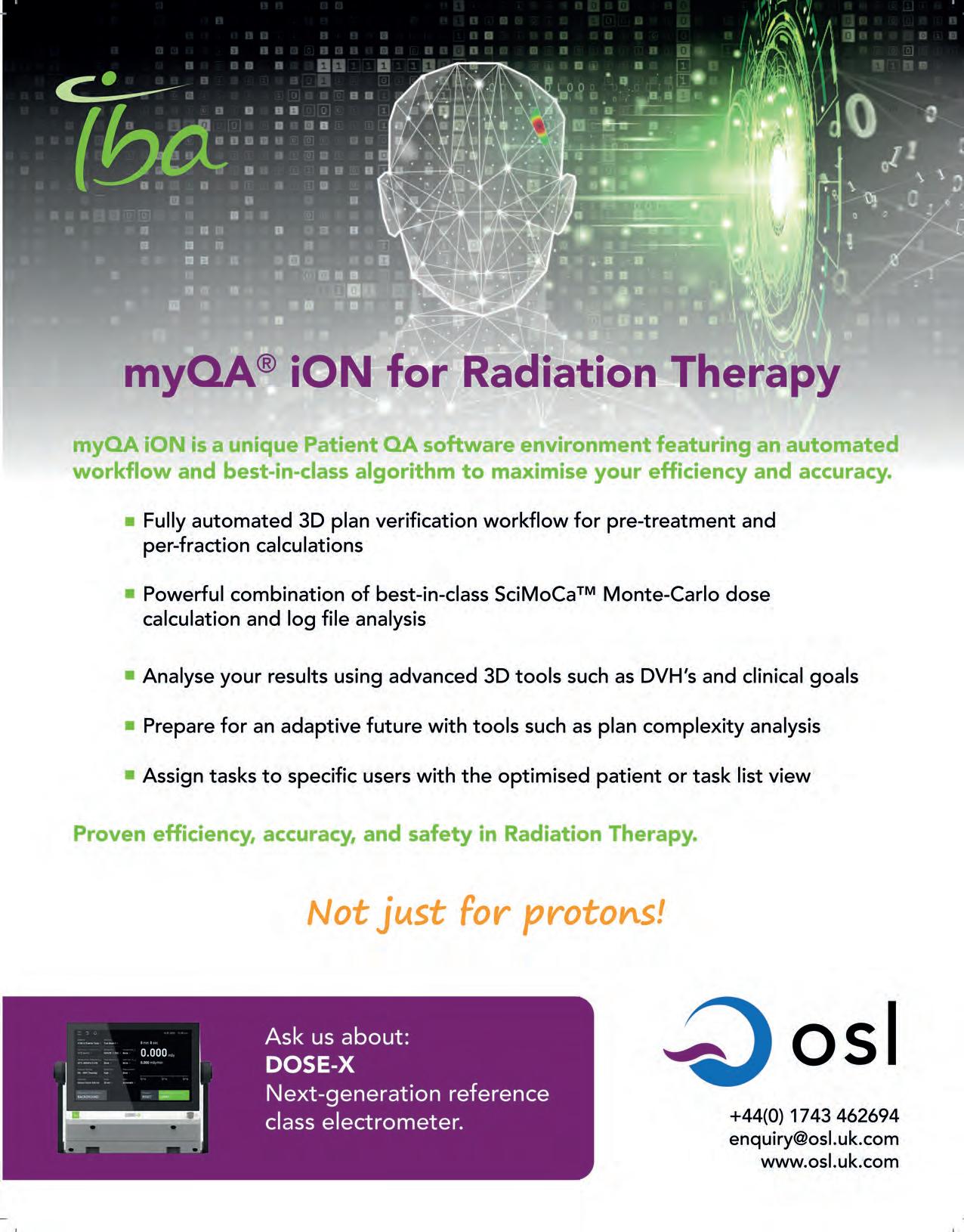
















Welcome all to the summer issue of Scope. With the UK economy potentially stabilising in the months ahead, increased funding will be crucial to our workforce to deliver safe and effective services and avoid impacting on patient care in the long term.
In early January 2023, I asked the UK radiotherapy heads of physics group to respond to a “radiotherapy planning workflow” survey and had promised to summarise the results in Scope magazine. Well, here it is in this issue. Not only have I included the results of the survey, I also talk about the importance and benefits of such surveys and compare the results to our local clinical workflow at University Hospitals Birmingham (UHB) NHS Foundation Trust. Turn to page 50 for more details.
In the last few years, there has always been something around AI in the news, and now the integration into everyday apps. With the National Institute for Health & Care Excellence and UK government publishing numerous items around AI in general and in healthcare (including the recent one on the use of AI in radiotherapy contouring), we felt that it was the right time to hold a “Big Debate” on AI in medical physics and clinical engineering (page 14). This also tied in really well with our wonderful cover feature by Virginia Marin Anaya on public perception around the use of AI in our area (page 22).

Developing a well-designed research question, inclusive of collaborative
approaches, project managing the various activities and ensuring timely delivery can become a feat in itself, especially when there is a paper that needs to be written for publication at the end of the process. Sagar Sabharwal, a colleague of mine at UHB, presents his experience of introducing an important change in our clinical pathway for CyberKnife treatments. If this piqued your interest, in an upcoming issue, he hopes to share his experience of writing and the publication process. Finally, I’d like to leave you with something from Rob, our Editor for Scope magazine, who attended the STEF meeting earlier in the year. He said “It was great to meet and catch up with so many IPEM members. There was such a lot of energy and passion at STEF and it really emphasised the value of attending in-person events. The wide-ranging programme had something for everyone and some top speakers agreed to write follow-up articles for Scope after their talks – watch this space.”
Have a fantastic summer.
Usman Lula Chair of IPEM Scope EABFair access to education is an important consideration and the benefits of the apprenticeship route cannot be underestimated. It gives the trainee a salary and
an education with flexible learning. This route has become popular in various industry sectors. It’s not surprising that with its popularity there is now a route to Medicine
(Medical Doctor Degree Apprenticeship) expected to launch in September 2023. There are varied views in terms of outcomes from such training programmes and perhaps

around widening of access and quality of placements. There are also apprenticeship routes in healthcare science, delivered by a number of educational providers. Claire Doody,
a Senior Lecturer in Medical Physics, has kindly provided us with an insight into degree apprenticeships and what the students have to say about their experiences (page 43).
Usman Lula outlines the content in the latest issue of Scope, including artificial intelligence and clinical pathways.
“In the last few years, there has always been something around AI in the news, and now the integration into everyday apps”
EDITORIAL ADVISORY BOARD
Scope is the quarterly magazine of the Institute of Physics and Engineering in Medicine
IPEM Fairmount House, 230 Tadcaster Road, York, YO24 1ES T: 01904 610821 | F: 01904 612279 office@ipem.ac.uk | ipem.ac.uk |
Chair of IPEM Scope Editorial Advisory Board: Usman I. Lula
Principal Clinical Scientist, 1st Floor, Radiotherapy, Building, Medical Physics – University, Hospitals Birmingham NHS Foundation Trust, Queen Elizabeth Hospital, Queen Elizabeth Medical Centre, Birmingham, UK B15 2TH 0121 371 5056 | usman.lula@uhb.nhs.uk
IPEM Head of Communications
Paul Barrett
Commissioning Editor
Ejay Nsugbe
Commissioning Editor
Clara Ferreira
Commissioning Editor
Natasa Solomou
Commissioning Editor Helen Chamberlain
Commissioning Editor: Usman I. Lula 0121 371 5056 | usman.lula@uhb.nhs.uk
Commissioning Editor: Dr Paul Doolan Medical Physicist, German Oncology Center, 1 Nikis Avenue, 4108 Agios Athanasios, Limassol, Cyprus 00357 2520 8025 | paul.doolan@goc.com.cy
Scope is published on behalf of the Institute of Physics and Engineering in Medicine (IPEM) by Redactive Publishing Ltd redactive.co.uk
Discuss, debate, share. mycommunity.ipem.ac.uk/login
News, events, support. ipem.ac.uk
Back issues of Scope online. ipem.ac.uk/scope
We ask seven experts what the future holds for artificial intelligence (AI) in relation to medical physics and clinical engineering. Questions range from the new standard framework BS 30440, to regulation and AI’s impact on our current and future workforce needs.

Publisher: Tiffany van der Sande tiffany.vandersande@redactive.co.uk | +44 (0)20 7324 2728
Editor: Rob Dabrowski
Senior designer: Gary Hill
Picture researcher: Akin Falope
Production: Aysha Miah-Edwards aysha.miah@redactive.co.uk | +44 (0)20 7880 6241
Advertising sales: scope@redactive.co.uk | +44 (0)20 7880 7556
Scope is published quarterly by the Institute of Physics and Engineering in Medicine but the views expressed are not necessarily the official views of the Institute. Authors instructions and copyright agreement can be found on the IPEM website. Articles should be sent to the appropriate member of the editorial team. By submitting to Scope, you agree to transfer copyright to IPEM. We reserve the right to edit your article. The integrity of advertising material cannot be guaranteed.
Copyright: Reproduction in whole or part by any means without written permission of IPEM is strictly forbidden. © IPEM 2023. ISSN 0964-9565

Junior staff, more likely to be keen adopters, may require support to improve their skills in communicating and influencing senior stakeholders to drive digital transformation...
– Richard Meades, Radionuclide Therapy Lead Physicist page 14
21 / MEMBER PROFILE: DANIELA SABELLA
Trust Medical Device Safety
Officer Daniela discusses her job, the challenges she faces, the skillsets needed, why she joined IPEM and the benefits of being a member.
22 / PUBLIC PERCEPTION
Virginia Marin Anaya outlines her patient and public involvement and engagement work on artificial intelligence autocontouring for radiotherapy treatment planning.
28 / THE BEGINNINGS OF INTERDEPARTMENTAL AUDIT (PART 2)
David Thwaites on the original national dosimetric intercomparisons, which led to the IPEM interdepartmental audit network.
32 / MEDICAL DEVICE REGULATION COMPLIANCE

Dr Lorna Tasker and Dr Rebecca Nix from Swansea Bay University Health Board share their method and experiences in becoming compliant to the changing medical device regulations.
36 / HOW TO WIN FRIENDS AND REGULATE PEOPLE
A look at UK clinical scientists and the HCPC, covering the background and reasons for regulation before explaining more specifically the regulation of clinical scientists.
40 / CLINICAL TECHNOLOGISTS: A CRUCIAL PROFESSION
Clinical technologists play a huge part in the daily running of nuclear medicine departments, but does their role go unnoticed?
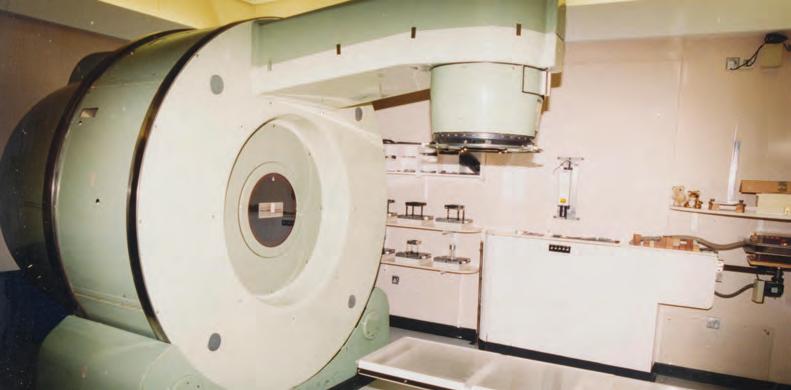
43 / DEGREE APPRENTICESHIPS: A ROUTE TO MEDICAL PHYSICS
Dr Claire Doody looks at apprenticeships and analyses student feedback.
46 / OPTIC NERVE RISK
Clinical Scientist in Medical Physics Sagar Sabharwal talks through his experiences with his Scientist Training Programme research project.

50 / RADIOTHERAPY PLANNING WORKFLOWS


Usman Lula, Principal Clinical Scientist at University Hospitals Birmingham, describes a survey of workflows within UK radiotherapy planning and a comparison to local practice.

54 / BOOK PITCH: LEADERSHIP AND CHALLENGES
Professor Carmel J Caruana outlines the ideas behind and the content within his book Leadership and challenges in medical physics: a strategic and robust approach
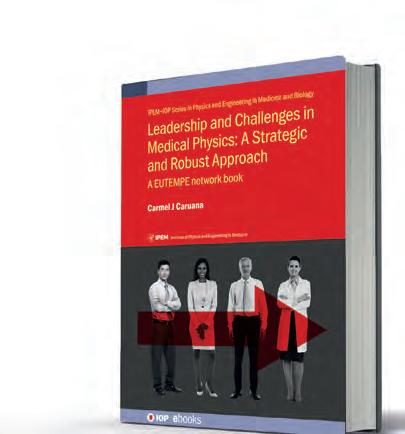
















































































Researchers from the US report that digital breast tomosynthesis (DBT) has improved breast cancer screening performance in community practice and identifies more invasive cancers, when compared with digital mammography.
In addition, radiologists’ interpretive performance improved with DBT, according to the new study.
After gaining US Food and Drug Administration approval in 2011, DBT was rapidly adopted in the US. As of September 2022, 84% of all mammography screening facilities in the US had DBT units.
Public Health England 2021 guidance states that tomosynthesis has been approved for use in the NHS breast screening programme as an optional extra tool in the assessment of screen-detected soft tissue breast abnormalities. However, it must not be used for routine screening outside of a clinical trial approved by the breast screening research advisory committee.
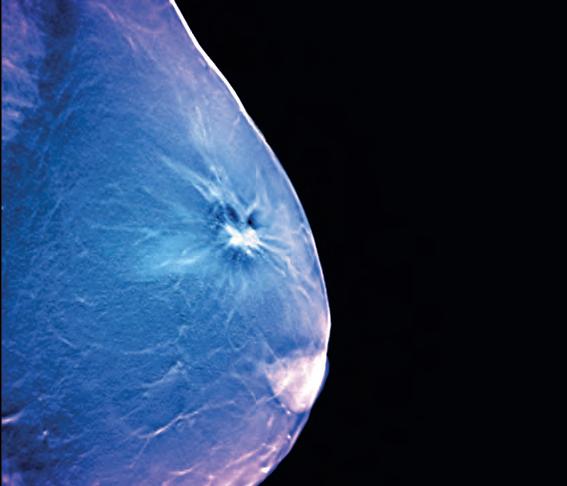
To establish performance benchmarks for DBT screening and evaluate performance trends over time in US community practices, the research team collected DBT screening exams from five Breast Cancer Surveillance Consortium (BCSC) registries between 2011 and 2018.
Performance measures included abnormal interpretation rate, cancer detection rate, sensitivity, specificity and false-negative rate.
Compared to BCSC digital mammography screening exams from the time and previous BCSC and National Mammography Database performance benchmarks, all performance measures were higher for DBT, except sensitivity and falsenegative rate, which were similar to concurrent and prior digital mammography performance measures.
A total of 896,101 women undergoing 2,301,766 screening exams – 458,175 DBT and 1,843,591 2D digital mammography–were included in the retrospective study.
The abnormal interpretation rate was 8.3%, cancer detection rate was 5.8 per 1000 exams, sensitivity was 87.4%, and specificity was 92.2%.
With DBT, assessed radiologists achieved the recommended acceptable performance ranges for cancer detection rate (97.6%), sensitivity (91.8%), abnormal interpretation rate (75.0%) and specificity (74.0%).
“Radiologists appear to perform better with digital breast tomosynthesis and have higher accuracy on screening 3D mammograms than 2D mammograms across US practices,” said lead author Christoph I. Lee, Professor of Radiology at the University of Washington School of Medicine in Seattle. “As this becomes the mainstay screening modality, we hope to see improved screening outcomes for women.”
The results of the study have been published in Radiology, a journal of the Radiological Society of North America (RSNA).
bit.ly/3GAuEvb
“Tomosynthesis improves screening in community settings”

Scientists have developed new technology to help couples undergoing in-vitro fertilisation (IVF) due to male fertility problems to increase their chances of success in having a baby.
Researchers from the University of Technology Sydney and NeoGenix Biosciences, a start-up from the university, have created and tested a new microfluidic sperm selection device that provides a more reliable process for selecting high-quality sperm.
Traditional sperm selection methods, such as density gradient centrifugation and swim-up, can cause DNA fragmentation and cell death, leading to unsuccessful IVF cycles.
“This new technology is a 3D printed, biologically inspired microfluidic sperm selection device, which replicates the female reproductive tract

and the natural sperm selection process, where only a small percentage of total sperm reach the egg,” said Professor Majid Warkiani from the School of Biomedical Engineering at the University of Technology Sydney.
“We conducted extensive testing against conventional IVF selection methods, with the new method showing an 85% improvement in DNA integrity and an average 90% reduction in sperm cell death. The sperm selected by our method also demonstrated better recovery after freezing than traditional methods,” he said.

The researchers have partnered with Monash University and Australian IVF clinics to implement the technology into clinical practice. They hope the device will provide help for those struggling with infertility and reduce the number of unsuccessful IVF cycles. bit.ly/3GozITg






A new way of using 3D printing to create infection-fighting materials for use as medical implants has been revealed. Engineers at the University of Bath and the University of Ulster have created a new kind of ferroelectric composite material with antimicrobial properties using a novel multi-material 3D printing process. They say the use of electrically responsive ferroelectric materials gives the implants infection-fighting properties.
bit.ly/40Wcs7a











The world’s first study of children receiving extracorporeal membrane oxygenation (ECMO) therapy using mobile magnetic resonance imaging (MRI) has been conducted.
ECMO involves oxygenating the blood outside the body and is available at eight UK centres. Patients who require ECMO therapy beyond a standard ventilator are critically ill.

Reasons may include lung failure, heart failure or infection.
A total of 25 children were scanned in the mobile MRI. It was used for routine examinations and for further diagnosis of abnormalities.
To evaluate the image quality of the mobile low-field MRI, a comparison image was taken in a permanently installed normal-field MRI for each of the children examined.
“We were more than satisfied with the results. Although the image quality of the mobile MRI is not as highresolution as that of a fixed device, the image data are ideal for emergency diagnostics and, above all, can be retrieved immediately,” said Hemmen Sabir, Leader of Neonatal Neurosciences at University Hospitals Bonn. bit.ly/3zzOse2
West Virginia University engineers have developed an approach that uses electric current as a treatment for pain and disease. The MouseFlex device will facilitate research into a technique called “vagus nerve stimulation” (VNS). The vagus nerve is responsible for involuntary body functions such as heart rate, breathing and digestion. Because VNS trials on mice must happen before new bioelectronic treatments can be tested on humans, the MouseFlex – a tiny electrode that has been formed into a cuff shape, like the cuff of a shirt sleeve – fits around the vagus nerve of a mouse and delivers electrical impulses.
bit.ly/3iYMyz7
A bionic robot arm being developed by a research team at Saarland University consumes very little electric power and can work safely with humans. The slender trunk-like robotic arm can swing, sway and bend in all directions and the researchers can control the position of the trunk quickly and precisely and make it perform almost any sequence of movements. They can also equip the tip of the trunk with additional functions, such as a gripper tool or a camera system.
bit.ly/43p59X9
Hundreds of people travelled to Glasgow to take part in IPEM’s Science, Technology and Engineering Forum (STEF)

– the first major in-person event from the Institute since before the COVID pandemic.

One of the drivers behind the two-day forum, which took place in February, was developing interaction between specialisms that often work in silos.
While each day had specialty streams for radiotherapy, imaging and radiation protection, engineering, education and professional development, sessions cut across specialism boundaries and streams straddled disparate disciplines, such as “Workforce for the future”.
The programme was closely aligned with the IPEM 2025 Strategy and its three key priorities – professional development, community and leadership.
IPEM President Dr Rob Farley delivered an address on the strategy at the start of the first day.
“IPEM’s role is a facilitating role,” he said. “It is about getting the right people together, lobbying and making sure that members have the training and collaboration needed, because it’s you that is going to have to deliver this.”
He was followed by Professor Andrew Reilly, IPEM STEF Committee Chair, who said: “Without collaboration we wouldn’t have had the impact that we did during the COVID pandemic. We need to look at how we encourage that interaction going forward.”

The wide-ranging programme featured a number of high-profile speakers, including Professor Sir Jonathan Van-Tam MBE, the former Deputy Chief Medical Officer, and Professor Bas Raaymakers, of the University of Utrecht, who delivered the John Mallard Lecture entitled “Hitting tumours with the hybrid 1.5T MRI radiotherapy system”.
Professor Raaymakers’ session charted the development of real-time adaptive radiotherapy, from its beginnings to what we can achieve at present (time tracking, automatic gating, intrafraction drift correction), to what he hopes will be possible in the future.
He summed up the drive behind the advances neatly when he said: “We want to treat moving targets as if they are static.”
Professor Van-Tam’s session was a whistle-stop tour of working on the UK Scientific Advisory Group for Emergencies (SAGE) during the pandemic. He covered vaccines procurement (“it was like spread betting with a bit of good fortune”), public perception, misinformation and much more.

A new innovation that was used across the two days was Slido – a polling platform for live and virtual events that allows the delegates to submit questions for the speaker(s) and then vote for their favourites to prioritise them.
The technology came into its own on the heated “Governance of AI” debate on the second day.

Questions ranged from regulation to ethics, to the impact on the future workforce. The session was the inspiration for the Big Debate on AI on pages 14–20 of this issue of Scope magazine.
Following dozen of sessions showcasing significant developments across medical physics and clinical engineering, an industry showcase, poster displays, networking opportunities and a prizes and awards ceremony, STEF 2023 came to a close.
Dr Farley said: “Due to the pandemic it has been a long time since we were able to meet together as a community like this. The organising committee have done a tremendous job and have set the bar high for STEF 2024!”
For more information on all the sessions at STEF, including full programme and speaker slides, visit ipem.ac.uk/STEF
For updates on all future IPEM events, visit ipem.ac.uk/what-s-on
To read IPEM’s 2025 Strategy, visit ipem.ac.uk/about/ipem-strategy
 SCIENCE, TECHNOLOGY AND ENGINEERING FORUM
SCIENCE, TECHNOLOGY AND ENGINEERING FORUM
We look back at IPEM’s Science, Technology and Engineering Forum – an opportunity to come together in person to collaborate, innovate and accelerate knowledge and understanding as a community.
Anew declaration on equity, diversity and inclusion (EDI) has been signed by IPEM.
Trustees agreed earlier this year to sign a new Science Council declaration, which replaces a 2014 version.
The key change is a focus on “equity” rather than “equality”. It also commits signatories to create greater opportunities for minoritised people to fulfil their scientific potential by challenging inequities and creating more inclusive practices in their organisations.
Dr Robert Farley, IPEM President, signed the declaration on behalf of the Institute. He said: “I believe this commitment is an important step for IPEM. Having a diverse science workforce is essential for science to better serve society and patients.”
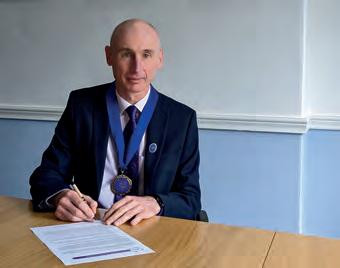
It commits IPEM to create a culture of equity, diversity and inclusion by:
● Appointing a board-level diversity champion who, in partnership with the senior executive staff member, will advocate the importance of equity, diversity and inclusion.
● Implementing a programme of work to
embed the principles of equity, diversity and inclusion into organisational policies, practices and behaviours.
● Measuring, assessing and reflecting on progress and reporting on our activities annually to our staff and members.
● Sharing progress and learning with the Science Council and supporting the collective progress of member bodies.
Much of this is already done by IPEM through governance, internal practices, strategic values and policies.
For information visit ipem.ac.uk/about/ equity-diversity-and-inclusion
An important breakthrough in the development of a new and highly accurate radiotherapy treatment for cancer has been achieved.
The new treatment, called FLASH RT, is as effective as current techniques but could also prevent unnecessary damage to healthy tissue and considerably shorten the time that patients spend in hospital.
Scientists at the National Physical Laboratory (NPL), including IPEM Fellow Russell Thomas, Science Area Leader of Medical Radiation Science, used a pioneering measurement technology to measure and standardise the absorbed dose for a potentially revolutionary form of proton beam radiotherapy known as FLASH.
Using a NPL-designed and built proton calorimeter, the NPL team conducted research to calibrate the UHDR radiation dose needed for treatments at a much reduced uncertainty of +/- 0.9%.

A leaflet telling patients about all the healthcare professionals involved in their radiotherapy journey has been produced by IPEM.
“There are more players in your radiotherapy story than you might think” details the different people involved in a patient’s treatment, from physicists and engineers to radiographers and other hospital staff.
It highlights the multidisciplinary
nature of the radiotherapy pathway for patients, their family and friends, describing the professions involved.
The leaflet was the brainchild of Professor Stephen O’Connor, IPEM’s Past President. It has been endorsed by the British Institute of Radiology, the Society of Radiographers and the Academy for Healthcare Science.
Professor O’Connor said: “IPEM has led the way on this leaflet, which highlights, for the first time, all the players in the radiotherapy pathway for
patients, as well as their family and friends. It promotes the healthcare professions which IPEM represents, radiotherapy physicists and biomedical/ clinical engineers and technologists.
Many thanks are due to Kirsty Blythe, Senior Radiotherapy Physicist from Guy’s and St Thomas’ NHS Foundation Trust, for her work on this project.”
The leaflet is being distributed to radiotherapy centres across the UK to be handed out to patients or displayed in waiting rooms. ipem.ac.uk/news/newradiotherapy-leaflet-for-patients
An initiative to help with workforce shortages in diagnostic imaging is being supported by IPEM.

Matt Dunn, IPEM’s Vice President Medical Physics, is working with NHS England to build imaging demand, capacity and workforce planning tools as part of the Diagnostics Transformation Programme.
These tools are being developed to reduce chronic workforce shortages and enable significant changes recommended by the Richards Review, which stated the diagnostic imaging workforce requires significant expansion to continue to provide safe, patient-centred diagnostic care in the wake
of the COVID-19 pandemic.
The tools will incorporate the assessment of workforce gaps of sonographers, nuclear medicine technologists and medical physicists working within CT, MRI, ultrasound, PET CT, nuclear medicine, X-ray, mammography and fluoroscopy. These tools will also provide an understanding of current demand, capacity and workforce gaps within diagnostic imaging to provide accurate workforce forecasts that will support operational and business planning decisions at a trust- and imaging network-level.
The workforce tools are expected to be finalised later this year.
It is with great sadness that we have to report the passing of Dr Stuart Meldrum, an IPEM Fellow and former Trustee.
Dr Meldrum, 79, graduated from the University of Aberdeen in 1966 with a degree in physics and his Doctorate in biophysics from the University of London in 1973.
He then joined the recently established Department of Medical Electronics at St Bartholomew’s Hospital in London where he held several posts over the next 20 years.
Dr Meldrum spent some time in the medical device industry before returning to the NHS as Director of Medical Physics and Bioengineering at the Norfolk and Norwich Hospital, a post from which he retired in 2009.
Funding is urgently needed in the medical physics and clinical engineering (MPCE) workforce as it is approaching the point of being unable to deliver the safe and effective services underpinning the NHS, according to IPEM.
The Institute has published a statement on the current workforce shortfalls and calls for action to be taken.
In a letter to Angela Douglas, Deputy Chief Scientific Officer for NHS England, and Helen Ross, Workforce Programme Lead, Dr Robert Farley, IPEM’s President, says lack of funding, a drop in the number of training places and a previous reliance on staff from overseas reflects the failure to plan and
develop the UK workforce.
Dr Farley said: “Clinical scientists, technologists and engineers are a subgroup of the healthcare science workforce and play vital roles in the delivery of modern healthcare. For the last 10 years, it has been clear this workforce is approaching the point of being unable to deliver the safe and effective services underpinning our NHS.
“Training numbers have consistently failed to keep pace with workforce turnover and the difficulty in meeting statutory Medical Physics Expert (MPE) requirements illustrates the significant challenges relating to career progression within MPCE.
“Previous attempts to boost recruitment by attracting staff from overseas reflect the failure to plan and develop the workforce within the UK.”
ipem.ac.uk/news/crucial-fundingneeded-to-tackle-workforce-shortages
He had a long-standing and highly successful interest in academic publishing, serving as editor of the journals Biomedical Engineering, Journal of Medical Engineering and Technology, and Physiological Measurement
Throughout his career, Dr Meldrum was active in professional matters, serving as President of the Biological Engineering Society, as an IPEM Trustee and a Director of the Association of Clinical Scientists.
He was one of the original biomedical engineers who inspired several generations of budding biomedical engineers and motivated them through his work as a journal editor to publish better papers.
Professor Stephen O’Connor, former IPEM President, who knew Dr Meldrum well, said: “Our thoughts at this difficult time are with Stuart’s devoted wife, Claire, to whom we send our condolences.”
Sean Edmunds, the Institute’s External Relations Manager, outlines some recent key policy updates.
The future supply of medical radioisotopes in the UK was debated in the House of Commons back in the spring – with IPEM members providing information and insights in order to raise the profile of this crucial issue.
Liz Saville Roberts, Plaid Cymru MP for Dwyfor Meirionnydd and the party’s Westminster Leader, raised the issue to highlight the concerns about the security of the supply of medical radioisotopes in the UK.
She also made the case for a national medical isotope centre in north Wales to provide a reliable supply of medical radioisotopes for the UK into the future,
as the strength of the UK supply has been called into question for a variety of reasons, including the UK’s departure from the EU, the war in Ukraine and the decommissioning of reactors in Europe.
IPEM worked with the MP to provide much of the information for the debate. She highlighted the fact that around 700,000 medical procedures using radioisotopes are carried out annually in the UK and diagnostic procedures using radioisotopes are now routine, identifying cancers and illnesses earlier to improve outcomes for patients.
She said: “Despite the clear importance of medical isotopes, both as a pillar of cancer

Decades of systematic underfunding and under-resourcing of radiotherapy have left the UK “lagging far behind” comparable countries in the numbers of patients able to access life-saving radiotherapy treatments, according to a new report.
Tim Farron MP, Chair of the All-Party Parliamentary Group on Radiotherapy (APPGRT), made the claim in the foreword to the Inquiry into radiotherapy and the cancer crisis report.
The report follows the inquiry held at the end of 2022, to which
IPEM contributed evidence, highlighting the need to address workforce shortages, funding to replace ageing equipment and increased access to artificial intelligence technologies.
Mr Farron stated: “This inquiry has found that decades of systematic under-funding and under-resourcing of radiotherapy means that the UK lags far behind comparable countries in the numbers of patients able to access life-saving radiotherapy treatments and the numbers of machines delivering radiotherapy
care and as a diagnostic tool, this branch of medicine is being neglected.
“The Institute of Physics and Engineering in Medicine has expressed its concern regarding the fragility of this supply chain, with post-Brexit customs backlogs, although fortunately quickly resolved, serving to highlight just how dependent on imports we are. I would like to put on record my thanks to IPEM for its work in drawing attention to this important matter.
“The reality is that, without decisive
per head of population. Technological advances that cancer patients in other countries benefit from are not widely available here.”
He called on the Health Secretary to deliver a Cancer Control Plan to transform radiotherapy services.
A new All-Party Parliamentary Group (APPG) for Diagnostics was formally launched in Parliament on 8 February. The inaugural meeting took place in Portcullis House.
Maggie Throup MP was elected
uncontested as Chair, with Lord Bethell, Elliot Colburn MP, Grahame Morris MP, Jim Shannon MP, Sir Oliver Heald MP, Tim Farron MP, and Mary Robinson MP elected as Vice-Chairs.
Presidents of the Royal College of Pathologists and Royal College of Radiologists gave updates and representatives from Bowel Cancer UK and Cancer Research UK shared expert evidence. The Community Diagnostic Centres (CDCs) programme was also discussed.
The APPG secretariat will produce an activity plan for the year ahead, which will be shared with IPEM in the coming weeks.
action, the UK is facing a likely catastrophic breakdown in the supply chain for medical radioisotopes, which could have a severe knock-on effect on diagnostics and therapy, and therefore on patients’ lives, in the UK.”
Innovation programme
Amanda Solloway MP, the Parliamentary Under-Secretary of State for Energy Security and Net Zero, responded on behalf of the Government.


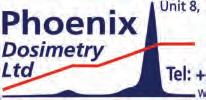
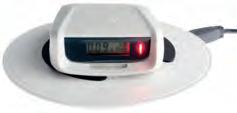
NEW Polimaster EPD Real Time Personal Dosemeter Small (badge size), 63x50x18mm, Bluetooth enabled, Wireless charging, compatible with Radsight software.
0.1 Micro Sv/h to 1 Sv/h, 15KeV-1.5Mev

RadEye B20 measures Alpha, Beta, Gamma surface contamination with optional H*10 fi lter and B-20 then becomes a dose/doserate meter

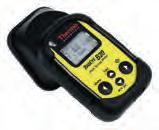
Ionisation Chambers 0.6cc NE2571/ NE2581 and NPL-2611 Secondary Standard
She said the Government recognised the need to strengthen secure access to radionuclides, adding as the Department for Energy Security and Net Zero was the lead department for nuclear innovation, it was playing a central role in this.
Her department’s launch in December of a £6m medical radionuclide innovation programme would focus on encouraging innovation in technologies and techniques to support access to radionuclides and increase the UK’s national resilience against global shortages.

She said: “My department will progress the medical radionuclide innovation programme, and our decisions will be driven by the evidence as it is gathered over the coming months. We remain openminded to the conclusions of the programme, and the role the Government might have in medical radionuclides supply in the future.”
Patch Panels for bunkers improve cable management, simple to install, custom made Dosimetry Cables: Any length, any connector, now with 2 year warranty
Fast Repair Service: typically 1-2 weeks for Mini and Legacy NE/Thermo Equipment. Free inspection service with no obligation quote

Without decisive action, the UK is facing a likely catastrophic breakdown in the supply chainThe UK Distributor for Thermo and specialists in Dosimetry Equipment and ‘Harshaw TLD Systems’.


ANNA
Strictly speaking, it isn’t. What I mean is that we don’t use it currently to deliver or organise our services. However, some of us are users or evaluators of AIenabled tools within our specialties. My own area of expertise is in imaging and there are now several commercial products available that are used within imaging. Most recently, AI-enabled magnetic resonance imaging (MRI) acquisition and image reconstruction tools are available on the latest models of the all the three major vendors in the UK. Another area that has seen the introduction of AI-based tools for interpreting physiological data is in ambulatory electrocardiogram (ECG) monitoring. Unlike the MRI applications, this impacts directly on the physiologist’s job plan by essentially removing the need for the physiologist to screen hours of ECG traces manually. .
ROBERT
In radiotherapy we mainly use AI for auto-contouring patient computerised tomography (CT) scans. There is research being done on using AI to predict maximum pass rates for patient specific quality assurance of radiotherapy treatment plans, though I’m not aware of any clinical implementation of this.
VIRGINIA
There has been a significant increase in the number of AI-based tools for healthcare applications. In medical imaging and radiology, AI is used as an aid or support decision tool for the triage and prioritisation of patients on waiting lists, diagnosis, monitoring disease
progression and tumour detection. In radiotherapy, AI is used for auto-contouring of tumour volumes and organs at risk in treatment planning. Machine learning is increasingly being used for automated radiotherapy treatment planning. In clinical engineering, AI and robotics are used in assistive technology for speech recognition, in various applications to manage patients’ health and in robot-assisted surgery, among others.
While the first AI-driven tools are starting to appear in a wide range of clinical applications, medical physicists/clinical engineers are rarely the intended primary users. In nuclear medicine at least, I am yet to see the wide availability and adoption of AI-driven tools that serve the needs of our workflows. It would be great to see this change, as AI in the form of machine learning is just a tool, freely available for anyone to use in developing solutions to their problems to improve their workflows and patient outcomes.
Within medical physics AI is used in diagnostic imaging and treatment planning. Image segmentation, classification and reconstruction can be automated and standardised. Our clinical engineering innovation team is also seeing lots of new medical devices being developed involving AI.
At the cutting edge, AI has a wide range of applications in medical physics engineering (MPE) – from speeding up MR acquisitions to diagnostic aids. Its potential is almost infinite as we move towards achieving a faster, safer, and cheaper healthcare service.
AI is being used in MPE to improve the efficiency of, for example, MRI quality assurance testing and MR spectroscopy analysis, and derive more meaningful insights from, for example, MR protocol change histories. Notably, these types of projects are generally built in-house at hospitals or as academic projects, rather than being available as commercial products.





ANNA








The suggested scope covers: clinical benefits; standards of performance; successful and safe integration into the clinical work environment; ethical considerations; and socially equitable outcomes from system use. This was informed with input from the MPCE community when it went out for public consultation. As someone who evaluates AI-enabled medical devices for a living I think these five areas are sufficient and certainly what we map our evaluation reports to. ROBERT
Standards for AI need to be representative of the needs of all stakeholders – scientists/engineers, doctors, allied health professionals, administrators, IT staff and






the public and patients. AI is truly multidisciplinary. The proposed BS 30440 standard is a general standard for AI, not just for medical/healthcare applications, so doesn’t specifically address healthcare or medical devices. There are other standards and regulations that do this, but this standard includes explicit mention of bias and carbon footprint In conjunction with other relevant standards and regulations, this new standard is a welcome addition.
The validation framework for the use of AI within healthcare appears to cover the main needs of clinical scientists and engineers. The framework seems to cover commercial AI-based applications. However, one aspect that would need clarification is in-house developed AI digital tools, validation datasets and how to share them ethically, safely and effectively with other NHS trusts. For example, using a national platform, avoiding duplication of work and facilitating wider adoption and deployment of AI systems. Other trusts may have to tune these tools for their specific population. Sharing of open source code, documentation and testing should be encouraged to ensure transparency and trustworthiness in AI systems.
I am yet to see the full details of this. I hope it will offer a framework for the assessment of AI products that complements the medical device regulations and other NHS standards, be more than a starting point for products to meet a minimum standard and avoid duplication in providing assurance to patients and the public. Irrespective, medical physicists/clinical engineers will still need to specify, validate and optimise the use of any AI tool regarding our specific local context and responsibilities.
The standard covers all aspects of the development lifecycle for AI. I think this standard sufficiently covers the information required for an auditable framework for AI in healthcare. AI is not necessarily common knowledge amongst scientists/engineers, and I think this standard covers the key areas to enable the evaluation and use of healthcare AI products and the requirements for the development of new AI systems.
We are still in the early stages of understanding AI quality, standards, and qualifications. ISO, IEEE, BSI, and NIST have all produced well-meaning documents. How those documents are interpreted in different scenarios is unclear. For example, should AI tools that carry lower risks, such as those that aid ultrasound
orientation, be evaluated in the same way as higher risk tools, such as MIA, which potentially identifies breast cancer without human supervision?
The draft BS 30440 framework provides a comprehensive list of requirements against which an AI product, and its development lifecycle, can be assessed. Though, as a comment on Section 8.2 mentions, “appropriate methods and requirements for monitoring, testing and validation for post-deployment model updates is an area of ongoing research”. Scientists, engineers, hospitals and AI suppliers would therefore benefit from more examples of sufficient evidence per clause in the standard, including equivalencies across other similar standards to aid their interpretation and ability to satisfactorily provide this evidence.
ANNA
I would say that they aren’t disparate, it’s just that one is more robust than the other. The UK has to take this approach since it does not have the resources to deploy or monitor with as much diligence as the EU – which only has to set up one team centrally to develop and police a framework for 27 countries.
ROBERT
It depends on what resources we have to enforce the regulations – regulation without meaningful enforcement is a bureaucratic exercise of limited benefit. We already have Medical Device Directive and Clinical Safety Standards DCB0129 and DCB0160 which will apply to AI systems for clinical use. We need to balance increased regulation with benefit. Commercial AI solutions will likely adhere to the stronger regulations, as they will be sold in those markets.
VIRGINIA
Ideally, EU and UK regulations should have consistent approaches. This would make the procurement, commissioning and quality management of AI products easier. A light touch approach may work. The NHS has large diverse datasets needed for AI. A challenge that
QRegulation – the UK is proposing a light-touch approach, the EU somewhat stronger. What is the right approach, and can two such disparate approaches work?
needs to be addressed in the UK regulatory framework is the balance of access to big data for training and validation datasets for AI in an ethical and safe manner but without impeding innovation in the NHS.
RICHARD
I am concerned that the UK and EU adoption of disparate approaches could add barriers to collaboration at scale, hindering AI in fulfilling its true potential. I would suggest a balanced approach – consistent across borders would lead to greater benefits reaching patients faster.
AMY
A light touch encourages innovation and implementation of AI in healthcare. The EU approach aims to use risk to categorise AI, which runs the risk of overregulating and limiting innovation. It is important to get a balance between encouraging innovation and ensuring safety. It is also important for regulation to result in trust from healthcare professionals and the public. Both approaches have pros and cons in terms of encouraging innovation, safety and building trust.
ROGER
No tool or product will be commercially viable, just selling to the UK. Although the EU regulatory approach presents higher hurdles to overcome and may restrict innovation and development, it will have to be overcome eventually.
Given the relative infancy of healthcare AI and differences between the EU and the UK as multinational states, one could argue neither approach is better than the other. The UK’s approach does leave more room for adaptability in response to future developments in AI, but part of its success is dependent on, for example, that of the Software and AI as a Medical Device Change Programme as multiple, potentially conflicting regulatory guidance can cause confusion and hinder both innovation and adoption. The EU’s more prescriptive approach could potentially lead to improved public views on AI adoption, but inevitably raises the bar for consistent enforcement of compliance across its member states all whilst keeping up with
future developments in AI. It’s feasible that the two approaches could work in tandem in the short-term whilst healthcare AI and its regulations are being developed, but there could be a future in which a more standardised, singular approach needs to be applied across the two regions, if not globally.

For more information on BS 30440 Validation framework for the use of AI within healthcare - Specification, visit bit.ly/3pcFcuA
To view a synopsis of the standard, visit bit.ly/3Vx0zmc
ANNA
Yes, AI software should be included in the software reform for MHRA.
ROBERT
AI can be a medical device. Medical Devices Regulations (MDRs) compliance is already a given, putting AI into this framework reduces the administrative overhead of implementing healthcare AI systems. The MDR needs to be flexible enough to permit the AI models to be retrained without having a full recertification of the product, e.g. by adopting performance envelopes for output instead of requiring specific output.
VIRGINIA
AI-based software should be considered medical devices. It creates additional risks or biases that need to be taken into consideration in the new MDRs. Static or passive software solutions will be easier to regulate. However, regulations should allow AI products to adapt and change quickly, so that they are fit for purpose.
RICHARD
Yes. I think this is important for the government’s light-touch approach to regulation to succeed in ensuring the safe, effective and ethical use of AI. However, to avoid hindering development and
QThe Medicines and Healthcare products Regulatory Agency (MHRA) has embarked upon an ambitious reform programme to ensure that medical device regulation is fit for purpose for software, including AI. Should AI be considered as such? What are the advantages/disadvantages?
NO TOOL OR PRODUCT WILL BE COMMERCIALLY VIABLE, JUST SELLING TO THE UK
adoption, suppliers and end users will need support and resources to ensure meaningful compliance.
Whilst AI is rapidly evolving, I think using frameworks developed to regulate software is sensible. Methods to test safety and effectiveness are likely to have some overlap, however, guidance might be lacking identifying and measuring bias, which could exacerbate healthcare inequalities in AI systems. The unknown nature of AI is another disadvantage of including AI in software regulation due to the risk of overregulating and limiting its use. AI regulatory frameworks need to have the ability to adapt and change as technology advances.
Why wouldn’t it be? It is a tool that affects the management of patients, so it is a medical device. When classified as such, it must meet particular generic standards. These standards have served the community well. Not classifying may lead to innovation and implementation obstacles, but a tool not tested appropriately runs higher risks.
A “yes” for regulatory purposes, AI should arguably be considered in the same vein as Software as a Medical Device (SaMD) because its core purpose and implementation is similar. One advantage of this grouping is that it enables regulatory bodies and other stakeholders to build on existing regulations and precedents. However, a disadvantage would be that because healthcare AI development and adoption is still in its early stages, applying existing regulations, without being adapted may be ill-fit to accommodate nuances specific to AI, such as the varying levels of its explainability – it may prolong AI development pathways by, for example, introducing complexity to the evidence required from developers to meet these regulations.
ANNA
I don’t know yet, but I could imagine AI being used more and more to optimise imaging protocols per patient but that would impact on radiographers rather than the MPCE workforce. Or maybe deep learning
algorithms could be used on QC data to see if it can predict when CT X-ray tubes or MRI coil channels are going to fail and when to replace them. It’s not an area I know much about, but could AI be used to optimise radiotherapy treatment planning? As a community I’m not sure we’ve really thought about how AI could be used to change how the MPCE workforce in the NHS but we do a lot thinking about how to evaluate it for use in diagnostics and therapeutics.
ROBERT
AI can help us draft documents and potentially act as a subject expert, reducing human effort and bias, though MPEs should still review the results. It could also review research papers and proposals, e.g. it can look for p-hacking, evaluate suitability of methodologies, and put findings into context. This leads to higher quality research and higher quality publications while reducing the burden of MPEs doing paper reviews.
VIRGINIA
I believe that AI-based tools will change our way of working. The role of MPCE will be more focused on leading digital transformation in the NHS, including automation and recognising patterns in big data. This would lead to freeing-up clinical resources, allowing specialist technical staff to dedicate more time to higher-value tasks and person-centred care.
RICHARD
Like many other staff groups, I hope medical physicists/clinical engineers will reap the time-saving benefits that general AI tools can bring to our daily workflows. Additionally, I hope our roles will change for the better from the potential to develop and implement custom in-house AI solutions that address specific challenges we face for which there are no commercially available solutions. However, we will also be challenged by the growing demand to understand, assess and interpret the performance of new clinical AI tools that impact the aspects of the patient pathway for which we are responsible.
AMY
AI can enable a more efficient workforce and deal with workforce shortages, allowing more focus on manual tasks and reducing administrative burden. AI can free up time for service improvement and the development of new technologies. Potential uses include diagnostics, treatment planning, administration and a vast array of new medical devices, including AI systems.
ROGER
Everyone is a potential user. AI is another innovation that will play a role in the services we provide and oversee. A broad understanding of an AI application, its effect, weaknesses and vulnerabilities is essential in the same way a nuclear medicine physicist should have a general knowledge of ordered subset expectation maximization for tomographic reconstruction.
HALEEMA
Currently, clinical scientific computing (CSC) teams work on, for example, data curation and product monitoring, which can be effort and time intensive. In the future, AI may, in part, automate those processes, such as the curation of physiological measurements via a large language model or the quality assurance/quality control of PET/CT systems conducted by AI watchdogs as part of an AI-driven evaluation project overseen by a CSC team.
ANNA
Yes.
ROBERT
AI goes well beyond MPE – all healthcare workers, not just MPEs or scientists, should be aware of the pros and cons of AI in healthcare. AI is so impactful, the public needs to be aware of the uses (and abuses) of AI, while healthcare staff at all levels need to understand the impact of AI on our roles and our patients.
VIRGINIA
The Topol Review highlighted concerns about the digital skills of the NHS workforce. AI should be part not only of the MPCE syllabus, but also wider health and social care professional training. The benefits of AI technology will come from deploying it successfully into a live healthcare setting which will require a multidisciplinary approach. Building a digital innovation culture is vital to manage resistance to change and to adapt.
RICHARD
Both. It would be great to see wider healthcare professional training addressing general AI competency for elements common to all of us. Domain-specific training for each medical physics/clinical engineering
staff group could complement this. For example, Medical Physics Experts under the IR(ME)R2017 regulations will require training to have a particular focus on validation, testing and optimisation of the implementation of AI that could affect patient radiation dose.
Yes, as a trainee clinical scientist, the exposure to AI during my MSc has provided a good base level of knowledge. I think that a skill deficit exists amongst the workforce on what AI is and how to use it. Education is a priority in implementing AI in healthcare. Often a lack of trust of AI stems from a lack of knowledge. A key takeaway from my clinical placements has been the potential for AI to improve workflows in numerous hospital departments.
The question here is, what will you teach if it goes into the syllabus? For example, is there value in an in-depth evaluation of the differences between deep learning and random forest? But how to evaluate it and monitor its performance in a local context is essential.
Ideally, AI should be included in the wider healthcare professional training to keep up with the pace of development of healthcare AI across the sector. For example, hospital and university peers, regulatory bodies, and research groups, to equip the healthcare professionals of tomorrow with the appropriate data literacy and technical proficiency. Having said that, there is value in including an MPCE-specific focus in AI in its syllabus, particularly as traditional MPCE roles evolve to decouple, add on, and/or enhance existing skills required and responsibilities. For example, where data curation may have been primarily delegated to an informatics team in the past, MPCE professionals may be expected to be more involved in this process and develop monitoring methods as part of the validation stage in the software development lifecycle.
ANNA
See my answer to the question “How might AI change the role of MPE in future?”
ROBERT
In radiotherapy, treatment plans could be created and
checked by AI, which would reduce the staffing requirements for physics departments. AI ‘expert systems’ may also be able to answer MPE-level questions reliably, perhaps reducing the need for human MPEs. AI integrated into treatment equipment and quality assurance pathways ought to be able to predict failures, reducing required machine and staff times. This could reduce the required number of MPCE workers, helping address the issue of shortages.
AI technologies will be deployed to support rather than replace staff. However, AI will have an impact on the MPCE workforce needs and skills. Experts will be needed in the development, validation, testing and deployment of AI tools. The MPCE workforce will be responsible for monitoring the performance and quality assurance of these AI applications to ensure that they are safe, effective and function as intended. More roles will be needed in medical physics IT, supported by robust IT infrastructure and cyber security.
We will need new types of roles, people with different skill sets from those we have now and will need to address differing attitudes of staff. Junior staff, more likely to be keen adopters, may require support to improve their skills in communicating and influencing senior stakeholders to drive digital transformation. Senior staff are likely to be more risk averse in adoption, requiring an improved understanding of AI, its risks and how to manage digital transformation safely and efficiently.
I think AI will positively impact the workforce. Workforce shortages are a huge issue that AI could help to address. This will help with backlogs, staff burnout, and contribute to the development of new skills/technologies. The future workforce needs to be equipped with AI knowledge, however, it is important that we do not become overreliant on AI. Education should focus on AI as a tool and not a replacement for the current skills/knowledge required. We must be careful that hospitals lacking the expertise or resources do not become left behind in the adoption of AI. This could result in exacerbating health inequalities.
There will always be a place in a modern healthcare system for an MPCE skill set. A tool that understands the service’s
technical, clinical, practical, scientific and operational aspects of problems is a long way off. AI may make some parts easier in an increasingly complex service with increasing demand and an expectation of higher quality standards; other demands will fill the void. My view is that it will have no effect on workforce needs.

AI may have a positive impact on the efficiency and resource allocation of the current MPCE workforce as, for example, low-complexity activities, such as acquiring QA measurements and identifying changes in MR protocols, are delegated to AI. However, in doing so, MPCE professionals are isolated from the potential knowledge gained through performing these low-complexity tasks. This may lead to an unintended negative impact on the MPCE workforce’s quality of work with high-complexity tasks, such as interpreting QA measurements for future procurement decisions and the impact of protocol changes on scan quality, which would have otherwise benefited from being done as part of an MPCE professional’s larger, more comprehensive, and varied education.
IPEM is launching a new AI Working Group, which will bring together expertise from across all disciplines and modalities within IPEM, united by specific knowledge and experience with AI.
AI is identified as one of the key factors shaping the future operating environment in our Science Leadership Strategy. This group will help shape IPEM’s thinking to help influence policy, regulation and research; supporting innovation and education both within IPEM and externally.
If you are interested in building your knowledge in this area, join our AI for Medical Physics and Engineering community. Please contact our EDI and Member Networks Manager or IPEM office for help getting started.
For more information visit bit.ly/413sWtE






My current role is Trust Medical Device Safety Officer at King’s College Hospital NHS Foundation Trust.


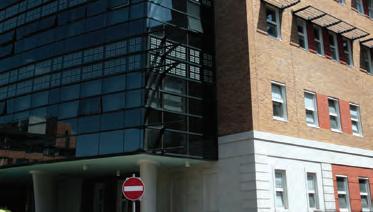

unprecedented opportunities to enhance patient care, they also pose new patient safety risks that require careful consideration.
What skillsets do you think are required to be successful in your role?
As a professional in my field, I believe that the following three skills are crucial for me to perform at my best:
Critical and system thinking: the ability to analyse complex problems, identify patterns, consider impact and make informed decisions based on data and evidence.
Curiosity: a strong desire to learn and understand new things, an open-minded approach to exploring different perspectives and ideas and a willingness to ask questions and seek out answers.

Active listening: paying close attention to what others are saying and seeking to understand their perspectives. The ability to ask questions and clarify information, as well as to empathise with others and consider their needs and concerns.
Why did you join IPEM?


In 2014, upon moving to the UK, I became a member of IPEM. My primary motivation was to gain access to a professional network that could assist me in learning and developing within the UK healthcare system, which was unfamiliar territory for me at the time.

What does your role involve?
It encompasses a range of responsibilities related to the safety of medical devices. This includes conducting regular reviews of incident reports involving medical equipment, leading investigations of adverse incidents and providing support in the implementation of safety recommendations.
Depending on the nature of the incident and information provided, I determine whether a technical investigation is required or whether the reporting department needs assistance in conducting their own investigation.
Additionally, I ensure that the trust complies with national patient safety alerts and manufacturer’s field safety notices related to medical equipment.

Which elements of your job do you like the most?
One of the most appealing aspects of my job is

the unpredictable nature of the challenges I face on a daily basis. Each day presents a unique set of circumstances and opportunities to learn and grow as a healthcare professional. For instance, I may investigate an incident involving unfamiliar medical equipment and have to use critical thinking and problemsolving skills to find the root cause and prevent it from recurring, or I may collaborate with frontline staff and management to create and implement a plan to address a newly identified patient safety risk.
What are the biggest challenges you see – either for yourself or the sector?


As part of the clinical engineering community, I believe the most significant challenge on the horizon is the rapidly changing healthcare delivery landscape, driven by the advent of new technology and innovative care delivery models. While these advancements offer
What benefits did you find useful as a member of IPEM?
As a pre-registered Clinical Scientist (Root 2) in the specialty of clinical engineering, I actively utilise the resources provided by IPEM to stay up to date with the latest industry developments and opportunities for professional networking. Specifically, I leverage the IPEM website to identify relevant events and conferences, while also keeping abreast of industry news through regular readership of Scope magazine. Additionally, I make use of the “mycareerpath” service to effectively plan, document and track my continuing professional development (CPD) progress. As part of my registration process as clinical scientist, I have been receiving oversight and guidance from a senior member of the organisation throughout my training programme.
If you would like to be part of our member profile series, contact communications@ipem.ac.uk


ARTIFICIAL INTELLIGENCE AND AUTO-CONTOURING





Virginia Marin Anaya discusses her patient and public involvement and engagement work on artificial intelligence auto-contouring for radiotherapy treatment planning.

am a Proton Therapy Physicist and last year I was delighted to have been awarded a place on the 12-month Healthcare Science Innovation Fellowship Programme hosted by the National Institute of Health and Care Research (NIHR) Devices for Dignity MedTech Co-operative. The programme is also supported by the Chief Scientific Officer team and Health Education England through the National School of Healthcare Science. The main objective of the fellowship programme is to develop innovation leadership skills in healthcare scientists through the development, evaluation and implementation of innovative technologies for patient benefit. The current round has a particular focus on digital technologies. The fellowship has an associated £15k bursary to be held by the trust hosting the fellow, and an average of approximately one day per week protected time. This allows you to undertake an innovation development programme, which includes education and mentoring, as well as an innovation project to explore an unmet need and to focus on solving the problem in accordance with the NHS Long Term Plan.

My project consists of the evaluation, adoption and implementation of artificial intelligence (AI)-based auto-contouring software for photon and proton treatment planning. As part of my project, I am organising and participating in patient and public involvement and engagement (PPIE) sessions. The aim of this article is to explore my initial experience of PPIE and to share lessons learned though my own reflections, highlighting the importance of including PPIE in any innovation or research project.
The burden of cancer on society and the health and care sector should not be underestimated. According to Cancer Research UK, one in two people in the UK born after 1960 will be diagnosed with some form of cancer during their lifetime and by 2030 the number of new cases of cancer is projected to reach 25 million worldwide. Around half of these cases will benefit from radiotherapy. The aim of radiotherapy is to deliver radiation dose to the tumour whilst sparing healthy tissue and the organs at risks in the vicinity. Radiotherapy treatment planning requires accurate delineation of tumour volumes and organs at risk. In standard practice, this task is performed manually by the clinician on the computer using the patient image datasets, which is very time-consuming and subjective. Furthermore, the time spent by clinicians on contouring reduces their availability for other tasks and can delay the start of patients’ treatments. In turn, this can lead to increased anxiety for patients and poorer outcomes. Thus, auto-contouring methods, which can be deployed
in the existing workflow, are needed in order to improve contouring consistency, optimise patient treatment pathways and improve patient outcomes whilst enabling effective use of staff resources.
Furthermore, due to anatomical changes and tumour volume shrinkage during the course of radiotherapy treatment, re-planning, which involves re-contouring on the new image dataset reflecting the new anatomy of the patient, may be needed. This is particularly important in proton beam therapy, which is very sensitive to anatomical changes in the beam path. Auto-contouring could potentially speed up the process of plan adaptation which would be a great asset.
The NHS faces unprecedented demands due to backlogs and staff shortages. One lesson learned from the COVID-19 pandemic is that we need to adapt and work differently to address these challenges and ensure we provide the best service to patients. In my personal experience as a physicist however, patients’ perspectives, opinions and ideas are seldom taken into consideration when undertaking an innovation project. As physicists, we tend to work with other physicists. We are so busy that we unintentionally “forget” to engage with patients and other members of staff as part of a multi-disciplinary team, missing the opportunity to address problems from a holistic perspective. We are also very keen on quantitative analysis, including evaluation metrics and statistics, without including qualitative analysis and analysing patients’ stories, which are more than just stories. They are powerful evidence which can help in solving the problem and at the same time improving the quality of outcomes.
There is a mixture of excitement and sceptism about the use of AI in healthcare. In recent years, there has been an increase in AI applications, including in the field of medical imaging as aid or support tools for triage, diagnosis and tumour detection. However, the concept of AI is not new. The term appeared in the 50s and was defined as the science and engineering of making intelligent machines, especially intelligent computer programmes. Today, AI is an umbrella term that refers to computer programmes or algorithms that can learn from data and perform certain specific tasks. Machine learning and deep learning are sub-domains of AI.


AI has the potential to transform healthcare and drive innovation at scale, addressing some of the challenges and unprecedented demands placed on the NHS. It is a paradigm shift that requires building a digital innovation culture. However, working differently can lead to resistance. Moreover, along with great promise, AI technology offers significant potential concerns. Some of the barriers to deployment of AI in the NHS include lack of funding; digital and data infrastructure; medical device
regulations and information governance. Other challenges include lack of transparency of training and validation datasets used in AI models; safety aspects; monitoring performance and quality assurance and evidence gaps around clinical impact and cost effectiveness.
There are also concerns about the digital skills of the workforce, as noted in the Topol Review.
It is clear that successful implementation of AI requires collaboration and involvement of all stakeholders, including patients, throughout the entire process from inception to implementation. Patients, as equal partners in research and innovation, can provide valuable knowledge and expertise based on their lived experience, offering unique and valuable insights. Their feedback can help us understand more about the general attitude and perception of patients towards AI and our readiness for safe adoption and ways to facilitate it, thereby increasing patient trustworthiness.
I recommend starting PPIE as soon as possible to improve the quality of your research or innovation project. There are different strategies to recruit patients, such as posting an advert on the People in Research website or various charities/voluntary organisations. Your Local NIHR Research Design Service can help too. I proactively approached several charities and PPIE officers who have access to existing patient networks and PPIE representatives. I found the PPIE module of the fellowship, which included an “ask the experts” session, very helpful. In the advert, I used simple and accessible language which can be easily understood. In addition,
I added in my advert that I was particularly interested in including adults from a diverse range of backgrounds, female, black, ethnic minorities and other groups that may feel under-represented. This allowed me to reflect and address the needs of the diverse population, highlighting aspects related to clinical implementation of AI-based auto-contouring in radiotherapy, which I may not have previously considered or even been aware of.
It is important to have a flexible approach when planning and organising PPIE to adapt to patients’ needs and preference and make it accessible to them. I would offer a choice to meet in person and not let Zoom become the default. Do not underestimate the power of having a meaningful discussion over tea and biscuits and giving patients the opportunity to raise any worries or concerns. I found that it was particularly important to include patients who do not have computers or like the internet. Giving these people a voice can have a meaningful and positive impact on your project and can lead to improved outcomes, help tackle potential inequalities in healthcare and avoid digital exclusion.
In my initial PPIE survey, I wanted to find out what patients thought and how they perceived and felt about AI auto-contouring for radiotherapy treatment planning. I asked patients to share their stories and describe their concerns about AI in radiotherapy. I, in turn, shared my own story as a healthcare scientist, tying it to the NHS Long Term Plan, to show them that our stories connected us to one another and how through those connections, it was possible to make a difference.
The two main aims of my PPIE initial survey were to find out how AI-based auto-contouring for radiotherapy treatment planning is perceived by cancer patients and secondly what the main concerns and barriers for implementation from a patient’s perspective are in order to help identify solutions to improve the current situation.
I aim to work with patients to design the methodology
we need to develop new cancer models, thereby addressing patients’ worries, and disseminate the results in existing patient networks.
It is very rewarding to draw on my own personal PPIE experience. Being involved in PPIE is a great opportunity for meeting new people and forming new meaningful working relationships. What I found from my PPIE activity, involving breast, prostate, lung and head and neck cancer patients, surprised me. Here are some of the results and patients’ stories:
● Perceptions of AI are undoubtedly influenced and shaped by science fiction and stories in the media about evil robots killing people. However, the survey showed that patients would accept AI-based autocontours if they were reviewed and edited, if needed, by the clinician. Auto-contouring is analogous to driving an automatic car. It does not replace the need for a driver, but it can make the driving experience more pleasant. Similarly, AI-based auto-contouring software does not replace the need for a clinician, but it can save time, freeing up staff resources to do more focused patient work.
“If the use of auto-contours can save time and money to the NHS, then it would make no sense not to use them.
● Patients think that AI will impact society for better or worse. On the negative side, they are mainly worried about potential job losses and security issues. Patients’ security concerns include risk that their data may be used to prioritise some patients for treatment unfairly, worries about how their personal data is used or shared, breach of personal data confidentiality and identity theft. In 2017, the NHS was one of the victims


PERCEPTIONS OF AI ARE UNDOUBTEDLY INFLUENCED AND SHAPED BY SCIENCE FICTION
of a global cyberattack, highlighting security vulnerabilities. This is still fresh in people’s minds.
“I am worried about hackers stealing confidential data.”

“We need to ensure that we maximise the potential of AI technologies for the benefit of patients, but minimise the risks.”
On the positive side, despite fearing some job losses, patients concluded that when we adopt new technologies, new jobs are created in those technologies, which can improve living standards.
“New posts should be created in the NHS to support AI applications to ensure that they are safe and effective.”
● Patients do not like the name “artificial intelligence contours”. They find the term misleading. It makes them think that the clinician would be replaced by a robot that would then outline the patients’ organs at risk manually with a pen. They prefer the name “computer-generated contours” or “auto-contours”.

● There is a lack of trust in AI in general due to lack of understanding of what the algorithms do and how
they learn from the data. It is a black box. Patients are concerned that there can be unconscious bias embedded into the AI technology, which can be dangerous and lead to devastating consequences for patients. Even though it is 2023, women are a small minority in AI-machine learning research. People that work in AI do not resemble the society their research and innovation is supposed to transform, failing to embrace diversity. There is concern that AI tools designed by white males may be more effective for white males, but female, black people and ethnic minorities can be discriminated against.
Furthermore, lack of transparency indicating that under-represented groups have been included in training and validation datasets can have an impact on people’s trust in cancer models. This does not mean that the cancer models do not work on these groups or that these groups have not been included, but the lack of transparency makes them feel marginalised, invisible and ignored. Patients would prefer to see quality in training datasets in terms of equality, diversity and inclusion, rather than just quantity given by the number of patients used in the dataset. They are concerned that the white male is seen by AI algorithms as the norm and everyone else, including women, black and ethnic minorities, is an anomaly.
● For the purpose of research, the open-source InnerEye auto-contouring toolkit has pre-trained cancer models for prostate, head and neck, and lung. Patients would like a breast cancer model as well. Breast cancer is the most common cancer in females and in the UK.
● Patients do not completely trust new commercial AI-based applications in healthcare because they have been developed by businesses for profit and may not have the best interests of patients at heart. They would prefer that the NHS worked in collaboration with these companies to ensure that these applications are safe for patients and function as intended.
“It would be very reassuring to know that the application does what it says on the tin and it works”
● Patients find the waiting time from diagnosis to treatment a period of great anxiety. They would welcome any efficiency improvement in the patient care pathway. Patients do not mind if an AI tool or a clinician “looks” at the images, they just want contours as accurate as possible and as quickly as possible.
“It is very difficult to know what to do when your loved one has been diagnosed with cancer. He wanted to get treatment as soon as possible. Waiting for treatment was very stressful for us as a family.”
● Patients think that the government is not doing enough to address challenges that the NHS is facing. They feel that NHS staff are understaffed and overworked, working in a pressurised environment. Patients would like to have more time to talk to NHS staff about their concerns and get more emotional support.
“I wish I could have had a physicist like you to talk to when I was diagnosed with cancer. It would have helped me with my anxiety and depression to learn more about radiotherapy treatment planning.”
“I was very scared when they told me I was going to have radiotherapy. All I could think was Chernobyl.”
● Patients are not aware of the role of healthcare scientists in the NHS. Patients thought I was a doctor. This highlights the need for public engagement to raise awareness of the role of a clinical scientist among the general public. In addition, patients perceived proton beam therapy as superior to other radiotherapy treatments. The story of Ashya King, whose parents took him abroad because they wanted him to receive proton beam therapy, is still fresh in people’s minds. As radiotherapy physicists, we need to ensure that patients and members of the public understand that proton beam therapy is not the silver bullet and for certain conditions, other forms of treatment are more appropriate.

In conclusion, patients seem ready to accept AI. Perceptions of AI are undoubtedly influenced by stories in the media. However, patients appear willing to accept AI auto-contouring for radiotherapy treatment planning to save clinicians’ time. Faster turnaround times reduce waiting times across patients’ pathways and thus, anxiety to patients. The biggest challenge is likely to be helping patients overcome fears about cybercrime.
Populations used in training and validation datasets may not be representative of patients’ populations, which can potentially introduce gender, disability and ethnic bias. A lot of work has been done, but we still have a long way to go to fight against discrimination and recognise the value of diversity. Numerous real-world examples have been provided in the book Invisible Women by Caroline Criado Perez, exposing data bias. Unconscious bias and unintentionally failing to embrace diversity can disadvantage women. In the context of AI in radiotherapy, some commercially available AI auto-contouring solutions have not included the ovaries as organs at risk in their pelvis model. They do include prostate, seminal vesicles and penile bulb, illustrating the unintentional bias that the male pelvis is the default. I understand, however, that these companies take feedback from users very seriously and hopefully, will include a complete female pelvis model in the newer versions.
In the NHS, we aim to improve the quality of the service we provide to patients and tackle potential inequalities. Building greater equity, diversity and inclusion in healthcare is crucial to make progress and build a healthy and better society. PPIE has the potential to enable a wide range of voices to be heard and make a meaningful and positive impact, through input of differing ideas and perspectives.
The challenge around slow adoption and uptake of new technology and under-representation of some population groups in accessing health service is well acknowledged. Both of these challenges can be helped by PPIE by ensuring products and service are developed in a way which is fit for purpose as defined by all future users of that technology or service and by understanding any potential barriers and concerns. I believe that PPIE should be a crucial part of all research and innovation projects. Patients should be empowered to speak up and have the opportunity to provide constructive feedback, raise issues, co-design methodology and contribute to the dissemination of the findings. PPIE can strongly influence in a positive and meaningful manner future radiotherapy treatment planning services in the NHS.
Virginia Marin Anaya is a Proton Therapy Physicist and NIHR Innovation Fellow and Topol Digital Fellow. She works in radiotherapy physics at University College London Hospitals NHS Foundation Trust. She would like to thank her mentor Professor Wendy Tindale OBE, Scientific Director at Sheffield Teaching Hospitals NHS Foundation Trust and an IPEM Fellow, and Lise Sproson, PPI Lead at NIHR Devices for Dignity, for their advice and input to this project. She also thanks the patients contributing to this project and radiotherapy physics staff at UCLH. This project has been supported by NIHR Devices for Dignity MedTech and In Vitro Diagnostics Cooperative. The views expressed are those of the author and not necessarily those of the NHS, the NIHR or the Department of Health and Social Care.
n Scope’s Winter 2022 issue, Edwin Aird outlined the history of UK radiotherapy trial quality assurance (QA). A significant component was/is to use external dosimetric audits to check trial dosimetry compliance, using phantom designs representing the treatment site of interest. Basic dosimetry is also critical and the article gave a short overview of the first national dosimetry intercomparisons (DIs) that IPSM (now IPEM) ran during 1/19871/1991 (megavoltage photon beams, reported in 1992) and 5/1995-5/1996 (electron beams, 1997). Edwin’s article also summarises the status of delivery
equipment, beam shaping, imaging and treatment planning at the time 1 2 I had already started drafting an article on the earliest DI, hence I am calling this “Part 2” and hopefully providing some interesting additional historical detail.
By the early 1980s there was increasing interest in demonstrating consistent radiotherapy dosimetry between centres, for trials and routine practice; and hence in dosimetric intercomparison (or dosimetric audit) to test this, using independent equipment and measurements. The IPSM
Radiotherapy Topic Group (RTTG, now RTSIG) developed the idea of a national megavoltage photon DI around 1982. An epoxy-resin water-equivalent trapezoidal phantom 3 was designed to test beam calibration, other single beam parameters and multi-field planned deliveries in homogeneous or inhomogeneous (lungequivalent insert) settings. A Farmer chamber could be positioned at a reference depth or within a “target volume”. This was manufactured at The London Hospital (TLH) and feasibility tested there, reported in 1983 by Stan Klevenhagen, and then between a few centres, including Edinburgh, which was when I got involved. I took on the

David Thwaites
fills in more detail on the original national dosimetric intercomparisons and how they led to the IPEM interdepartmental audit network.
2 Theratron Cobalt-60 unit, this model was a 1984 version of previous designs

working party chair role to co-ordinate/ organise the DI from 1986. The working party was myself, Jerry Williams (Edinburgh), Edwin Aird (Mount Vernon), Stan, and Peter Williams (Manchester). It also included Trevor Godden (Bristol), who sadly passed away during the project. The original aim was to check all UK MV photon beam calibrations and at least four plans per centre, to include both fixed FSD and isocentric deliveries.
In 1984 the RTTG chair (Bryan Stubbs, Leeds) approached the Department of Health (DoH) for funding. This was turned down with the comment that the need was unclear, since all centres had physicists and
QA programmes. We had to think again and so we approached manufacturers and obtained loaned equipment: from NE Technology (Farmer chamber, electrometer, high-quality thermometer) and from Negretti Aviation (an aneroid barometer, to independently check locally stated presssures). Also we had the TLH phantom.
Originally it was proposed that one person would visit all centres to perfom the DI measurements. However, in practice, we split the country into regions. A regional auditor would measure in each centre then visit the next auditor’s department to measure, with that person observing.
That preserved independence, but enabled consistent approaches to be transferred region-to-region. That was the exact beginning of the regional structure of the interdepartmental audit network (IDAN) that later developed. Measurements were to be carried out by working medical physicists visiting other centres at nights and weekends. Therefore, to reduce time, only one each water-equivalent and lung-containing plan were to be done, either fixed FSD or isocentric, with each centre choosing its normal clinical practice.
There were no central travel funds for this national study. Therefore we sought other sponsorship, which was provided by IGE Medical Systems and (as named then) Varian-TEM. For the Scottish region, I successfully bid for travel funding (supported by the Scottish Radiotherapy Physicists Group, SRPG) from the Scottish Home and Health Department’s Common Services Agency.
This enabled the DI to begin with the Scottish measurements (and Newcastle) and then I measured in Leeds in the next region and handed over to George Pitchford. The system travelled slowly round the country (other auditors are acknowledged in the original 1992 PMB paper), eventually coming back to Edinburgh and I audited Belfast as the final centre. In total, 64 centres were visited over three years, with 61 Co-60 beams tested and 161 X-ray beams (on around 90 linacs).
Jerry Williams was instrumental in the analysis of results. In total, 97% of calibrations were within 3%, but 15% of centres had some planned distribution measurements greater than the 5% tolerance. Deviations were up to 6% in beam calibrations, 5% between different beams in a given centre, 8% in the homogeneous plan and 16% with the lung insert. Centres were asked to investigate any discrepancies that were over 5%.
One centre showed a 25% higher-dose discrepancy on a Co-60 beam calibration. This well-known incident at Exeter was discovered by the DI visit in 7/1988 and I well remember Trevor’s phone call soon after it became clear, opening with
“I think we have a problem”. In the aftermath, the detailed results were not returned. An enquiry report commissioned by the local Health Authority (B Thwaites (no relation!), T Burlin and C Joslin, Nov/ Dec 1988) provides a range of information and recommendations. In short a new (and hence higher activity) Co-60 source had been installed in 2/1988. At its calibration, apparently to avoid exceeding a particular electrometer scale, 0.8 minute measurements were taken instead of the usual one minute, but the time was not corrected from the usual calculation, hence 25%. The incident began the national moves towards more formal Quality Systems in UK radiotherapy centres, as recommended in the Bleehan Report, Quality Assurance in Radiotherapy, 1991 (with Peter Williams and Trevor Godden as group members). Of course, it can be argued that if we had completed the DI faster (with full funding) we would have visited Exeter before the source change. However, the IDAN may have then been set up and the recommendation from the DI study for independent checks on beam calibrations would also have been made.
Another consequence of discovering this incident was that full funding was provided when I subsequently put in a funding request to the DoH (NHS Management Executive Group) on behalf of the DI working group (now being myself, Edwin, Tom Jordan (Manchester), Stan and Alan McKenzie (Bristol)). We employed Andy Nisbet (then Oxford, now UCL) in Edinburgh as a full-time post-doc and measurements were completed between 5/1995 and 5/1996. He visited 52 centres, checking three electron beams per centre. In addition, to follow-up the photon intercomparison, he tested one photon beam per centre, with none being outside 3%. Although only one clinical electron beam was outside the 5% tolerance, there were some findings of up to 15% on newly comissioned linacs, not yet in clinical use, which were rectified. The study results used the final values, on the basis that we were determining clinical dosimetry consistency and the audit had been used judiciously as an independent
calibration check before the beams were put into use.




There was one potentially discoverable incident not seen, due to reducing the programme of measurements to ensure the time-per-visit was manageable. Centres chose to treat the planned deliveries as fixed FSD or isocentrically, whereas originally both had been suggested to be included. One centre that chose fixed FSD would later (in 1991) discover an incident which had been present since 1982. In short, it involved double correction for ISL effects, resulting in underdoses ranging up to tens






of per cent and affecting some hundreds of patients. This would have been picked up had resources allowed both approaches to be tested.
Following the Exeter incident, I proposed to IPSM, DoH, the RCR and the enquiry report authors a costed UK Radiotherapy Physics Quality Audit Centre, for regular audits and to support the design and QA of clinical trials. This had mixed reactions, ranging from full support to arguments against. The latter were based in part on cost, but also on the idea of one central group. It was not successful! A national group would only be established 15 years later, when the RTTQA group was set up (see Edwin’s article), with trial-linked funding. It was devolved across four clinical centres, with a remit for QA in radiotherapy trials and collaborating with the IPEM IDAN and others (rtttrialsqa.org.uk).
In addition, the DoH approached me about other possible rather narrower national DIs, after some other specific incidents. One was for small fields; a single-centre incident involving patient dose errors had occurred from data fitted (with a polynomial?) and extrapolated and used without experimental validation. I suggested it would be more time and cost-effective for centres to measure locally, ideally using independent support from the now-established IDAN groups and that a national DI would take 1-2 years based on the electron DI experience. The approaches were dropped when it became clear that


THERE WAS INCREASING INTEREST IN DEMONSTRATING CONSISTENT RADIOTHERAPY DOSIMETRY3 The national megavoltage photon DI phantom (large hole for “water” or “lung” insert (see 4 ); smaller holes (one shown empty) for “water” rods or Farmer chamber insert (shown at top). Photo John McLellan. 4 The Scottish+ semi-anatomical phantom (fixed “bone” and “lung”; 8 cm diameter “water” (lhs) or “lung” (rhs) inserts (from the DI phantom); 2 Farmer and 16 smaller chamber or rod positions.
answers were required in 6 weeks, the time to prepare for a Ministerial answer in Parliament.

The regional structure adopted in the photon DI continued afterwards, developing immediately from 1991/92 with some consolidation of groups to the current number, and co-ordinated from Nov 1992 by IPEM. Some groups continued to use similar DI methods and geometric phantoms, whereas others published further developments (e.g. Scottish, Welsh, SouthWest, Midlands). Some began to use trial phantoms. The NPL began some audits in 1994 to link the regions at the level of reference dosimetry implementation. The IDAN has continued to develop to suit the different groups’ priorities, having a common core and experience-sharing and also linking to the RTTQA and trials audits, but with different audit scope and timing in different groups.
As an example of the development of one such group, I refer to the original Scottish group organised from Edinburgh. As co-ordinator and main auditor of that until I moved to Leeds over 2004/05, I put together a grant application in late 1991 (on behalf of the SRPG) to the Clinical Resources and Audit Group of the Scottish NHS for seed funding for a set of equipment and for travel. That was provided, covering the first few years, continuing afterwards
with local centre funding. A new semianatomic phantom was designed to allow various “treatment sites” to be evaluated (there were few anatomic phantoms commercially available then). This was produced in 1994 by the St Bartholomew’s medical physics department’s beautifullynamed Tissue Equivalent Section 4 The audits eventually grew to encompass MV photons (calibration and planned over a range of “sites” and with increasing complexity as technology evolved), electrons, kV X-rays, brachytherapy, in vivo dosimetry (one set of calibrated patient diodes used across centres for patient measurements) and procedural audit, arranged over an audit cycle. The group’s name evolved from the Scottish group to the Scottish and Newcastle, to the Scottish+ group (including Newcastle, Carlisle, Middlesbrough and Belfast; “The Three Countries Group” was briefly considered!)
After the electron DI reported (1997) another funding bid went to DoH, on behalf of IPEM and supported by RCR, to fund the ongoing IDAN. It was also turned down, stating that regions and centres should find funds for this. Indeed that is how the system progressed, with centres mutually supporting staff and travel resources. However, this meant that this vital activity wasn’t so clearly recognised outside the profession and likely affected the development and regularity of audits in some groups.

The DI studies provided strong confidence in the quality of UK radiotherapy dosimetry, but also identified a range of deviations, some quite significant. These were investigated and resolved, thus the DIs helped to improve dosimetry for those beams/centres and hence the overall consistency of UK dosimetry, demonstrating their value. Repeated or subsequent DIs confirmed this, showing improved results. By identifying large deviations, clinical incidents were rectified or avoided. The DIs also established the general methodology and regional template for the IDAN. The DI experience and findings provided confidence in the approach and also that independent audit and the regional collaborations involved were of significant value.



For further details and relevant references, see Clark et al., BJR 2015, dx.doi.org/10.1259/bjr.20150251, where we discuss 30 years of radiotherapy dosimetry audit. If anyone has comments or further DI/audit anecdotes, the author can be emailed at david.thwaites@sydney.edu.au.
David Thwaites is Emeritus Professor of Medical Physics at the University of Sydney and honorary Professor of
Oncology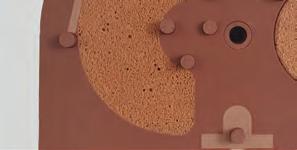


Physics at the University of Leeds and an IPEM Fellow.

Dr Lorna Tasker and Dr Rebecca Nix from the Rehabilitation Engineering Unit at Swansea Bay University Health Board share their method and experiences in becoming compliant to the changing medical device regulations.
he expertise, time and effort required to implement and maintain an externally certified quality management system (QMS) cannot be underestimated. Swansea Bay University Health Board uses a pragmatic approach that allows the sharing of methodologies applicable to a number of services across a health board that is impacted by the new medical device regulations.
Swansea’s Rehabilitation Engineering Unit (REU) provides regional services in wheelchair special seating/postural management, pressure ulcer prevention and intervention and functional electrical stimulation. The multi-disciplinary team (17 whole-time equivalents) assess, design and manufacture innovative medical devices (approximately 600 per year), providing solutions to improve the quality of life of people with complex disabilities. REU is a section within the Department of Medical Physics and Clinical Engineering.
The introduction of the European Union (EU) Medical Device Regulation (EU MDR 2017/745) in 2017 meant there were implications for NHS departments, including rehabilitation engineering, which manufactures or modifies medical devices for patients. Since May 2021, the EU MDR has applied in EU member states and Northern Ireland. However, the full implementation in Great Britain was delayed, largely due to the pandemic, and it subsequently did not become a retained UK Law within the Brexit transition period.
In late 2021, the MHRA initiated a consultation on potential changes to the regulations. Based on the consultation
response (issued by MHRA in 2022), it is anticipated that GB law will be updated in line or equivalent to the EU MDR, which would therefore include the need for appropriate QMSs to be in place within health institutions undertaking in house manufacturing and/or modification of medical devices. The MHRA has indicated that these legal requirements are expected to come into force in July 2025, although it has also been indicated that legislation will be introduced in late 2023 to strengthen post-market surveillance requirements.
The most appropriate QMS framework for the manufacture of medical devices is the BS EN ISO 13485:2016 standard (Medical Devices- Quality management systemsRequirements for regulatory purposes).
A QMS is a collection of processes, aligned with service/organisational objectives that are developed to ensure successful delivery of those objectives and continual improvement. External certification to that standard provides independent assurance that relevant legislative requirements are fulfilled.
In early 2019, the REU teamed up with another department within the health board:
Maxillofacial Laboratory Services (MLS); to make the case for shared resource to lead the implementation of a joint QMS. The MLS manufacture oral and facial prostheses, dental appliances as well as surgical devices.
A specialist role was created to lead the implementation of a joint QMS. The implementation period was approximately 18 months, which involved a number of stages as summarised 1
A major enabler was the definition of the high-level medical device families, which were identified by categorising approximately 600 REU medical devices manufactured or modified a year. Initially nine medical device families were defined and this provided the structure necessary to break down and create templates for the technical detail and procedures for each family. This structure has been beneficial when new medical device families have been added to the QMS according to
THESE LEGAL REQUIREMENTS ARE EXPECTED TO COME INTO FORCE IN JULY 2025, THE MHRA HAS INDICATED
Swansea’s experience
changing service needs or expansion.
The introduction of an electronic document management system (DMS) was essential and this occurred within the first six months of the project, which facilitated a consistent document control process and ensured early adoption of new ways of working. A large majority of documents were based on existing documentation and therefore a large task was collating relevant existing processes.
In April 2021, the REU and MLS had their formal external assessment and the joint QMS received external certification to ISO 13485. On reflection from this experience, the key ingredients necessary for the successful implementation were:

1.Colleague engagement
● To have colleagues engaged in the process from an early stage was critical
● Embedding the project into day-to-day working life
● Providing all members of the team a role to play was also beneficial
● Clear communication on the key drivers, shared goals and the “WHY”.
2. Project management
● Strong leadership and some tenacity is essential to keep the project on track
3. Prioritise
● Being comfortable that the QMS will evolve and develop over time
4. Use of appropriate level of detail
● To provide a controlled level of flexibility within processes.
The implementation of a joint QMS with another service has provided significant cost savings to the organisation. The arrangement has also enabled a number of efficiencies by holding joint management review meetings and performing cross-service audits where staff members from MLS audit REU specific aspects and vice-versa.
This experience in implementing a joint QMS highlighted that there are common components of a QMS which can be shared. For example, 20% of the REU’s QMS documents are shared with the MLS. These procedures are high-level requirements of the ISO standard that are often standard across services in an organisation, such as control of records and infrastructure and
QMS Implementation Method (generic) Case study: Swansea Rehabilitation Engineeringequipment management.
Beyond implementation, the maintenance of a QMS still needs dedicated resource and it has been essential that both REU and MLS have respective individuals assigned as quality managers or leads within each department. It is estimated that these individuals spend approximately two days a week on QMS-related activity.
Clearly, the QMS has provided the necessary regulatory compliance that reduces the organisational risk. Importantly, the department has benefited from further (more formalised) assurance of the safe and effective provision of medical devices to reduce the risk of patient harm. A number of other benefits have been identified, which include:
1. Enhanced traceability and record keeping to enable more efficient reproduction or repair of devices
2. Efficiencies from using an electronic DMS- the advantages of automated document control and the ability to quickly locate a document
3. Consistency in design and manufacturing processes, which can assist technical staff by feeling assured when there are defined processes to follow.
The knowledge and experience gained from the joint QMS implementation for REU and MLS resulted in Swansea Bay University Health Board recognising the need to extend this method to other impacted services. This work resulted in the organisation supporting a substantive health board-wide position, a Regulatory and Compliance Manager (Medical Devices), which is hosted within the REU. The role interprets guidance and legislation, and provides coordination and advice to MDR-impacted services.
MDR-impacted services within the organisation (e.g. occupational therapy, orthotics, digital services) are requested to formally report on a bi-monthly basis to the MDR Assurance Group with the function of
and Quality
a number of reviews to understand the level of MDR-preparedness across services and health boards in Wales in order to provide regular updates and assurance to Welsh government.
the group being to improve the level of MDR compliance of impacted services, to share best practice and to ensure an effective level of governance is in place. The approach undertaken is for each impacted service to have a nominated quality lead that has local responsibility for quality and who is given support and guidance by the Regulatory and Compliance Manager regarding MDRrelated activity.
The third service which has benefited from the Swansea QMS method roll out is the Artificial Limb and Appliance Service (ALAS), which manufactures upper and lower limb prostheses. It achieved ISO 13485 certification for its QMS in March 2023, following an 18-month implementation period.
Welsh NHS health boards and trusts are fortunate to have access to an All-Wales MDR group that facilitates a collaborative forum to provide support to service leads with NHS Wales. The group has conducted
The Swansea REU has given support to NHS services across the UK on a consultancy basis. More recently, Swansea has collaborated with Betsi Cadwaladr University (BCU) Health Board to provide support in relation to their MDR preparedness. The Regulation and Compliance Manager (Medical Devices) from Swansea supported an evaluation that took place between January and March 2023, commencing with an “MDR Launch Meeting” and subsequent follow-up questionnaires and service-specific discussions. The output provided a number of recommendations to provide guidance to impacted services and further work is planned to support this activity.
The experiences locally within Swansea and working with BCU Health Board has highlighted that there are opportunities to standardise approaches by sharing methods (including document templates, for example). This method has demonstrated benefits in assuring an efficient, consistent, aligned approach in response to an evolving, more complex, legislative landscape in relation to the manufacture and modification of medical devices.
Dr Lorna Tasker is a Consultant Clinical Scientist, Head of Rehabilitation Engineering, Medical Physics and Clinical Engineering. Dr Rebecca Nix is a Regulation and Compliance (Medical Devices) Manager in Rehabilitation Engineering and Medical Physics and Clinical Engineering. Both work for Swansea Bay University Health Board.
THE QMS HAS PROVIDED THE COMPLIANCE THAT REDUCES THE ORGANISATIONAL RISK
his article offers some context and background on the topic, initially with a broad look at regulation in general – answering the “why”, “how”, and “who” type of questions. Gradually the focus shifts, to explain more specifically the regulation of clinical scientists. A follow-up article will report on a survey conducted across the profession last year, to capture our experiences and interactions with our regulator the Health and Care Professions Council (HCPC).
Regulation takes a few different forms, but the reasons for it generally remain the same – it’s about protecting the public.
It is not only utilities or services that are regulated –professions are also regulated. You likely come into contact with regulated professionals all the time – solicitors, architects and vets, to name a few. Again, it’s important that the public are protected from potentially untrained, unsafe practitioners presenting themselves as expert professionals. Statutory regulators, such as the HCPC, are government authorities, set up and underpinned by UK legislation.
The kernel of this form of regulation is a register of
professionals. The register is for a named professional title, e.g. “dentist”. Firstly, the register effectively protects use of this title. You may only call yourself a dentist if you are included in the register, which allows the public to check on a practitioner’s or clinician’s credentials and competence.
To join the register, professionals must provide evidence of meeting specific standards for knowledge and competence. This will generally take the form of academic and training records and CPD.
The regulator maintains the register – controlling inclusion, and monitoring those on the register (generally by audit of CPD). If complaints are made about a registrant, these must also be investigated, and action taken as necessary. You can also be removed from the register by regulator error. The key aims of regulation can be summarised as:
● protecting the public
● maintaining public confidence in the profession
● declaring and upholding professional standards.
Regulation is constantly evolving. Not all professions are regulated, and not every role in a profession may be regulated. Currently, there is a register for clinical scientists, but
not for clinical engineers or clinical science practitioners/technologists (there is a “voluntary register” only).
There are many regulators in the UK, generally initiated by government. In total, 30 healthcare professions are overseen by nine regulators and the HCPC regulates ~50% of the professions. Figure 1 shows the professions regulated by HCPC, and their relative proportions in terms of registrant numbers. Of the professional groups in order of decreasing size, clinical scientists are number 11 of 15. Indeed, even regulators are regulated – the Professional Standards Authority has a responsibility as regulator for the HCPC and other regulators in the healthcare sector – see “Policing the police”.

Roles and responsibilities vary widely across professions and so too do the practices of regulators. Some regulators only include fully trained professionals on their register, while others include students. Some regulators not only maintain a register, but also inspect facilities. However, there are common themes for practice.





An element common to all regulators in the healthcare sector is maintaining a professional register. Professional standards are reflected by who is allowed to join the register, who is allowed to remain on it and the standards and practice of the regulator. To become registered, a regulator will generally look at three aspects of an applicant. They should:




To be a high performing, adaptable and caring regulator that ensures public protection through strong, evidence-based regulation
To promote excellence in the professions we regulate and champion high quality care that the public can access safely and with confidence

Fair being honest, open and transparent
Compassionate
Inclusive collaborating with others and championing diversity
Enterprising seeking opportunities to be creative and foster innovation to improve our performance
treating people with respect, empathy and care
● Have the right knowledge & skills to treat/care for you
● Treat you with dignity & respect
● Act professionally and with integrity
In 1960, the Professions Supplementary to Medicine (PSM) Act established the Council for the Professions Supplementary to Medicine (CPSM). Medical Physics was not on the original list.
Statutory regulation for clinical scientists only began in 2000, when the Clinical Scientists Board of CPSM was created. Medical physics was amongst the initial 10 modalities included.
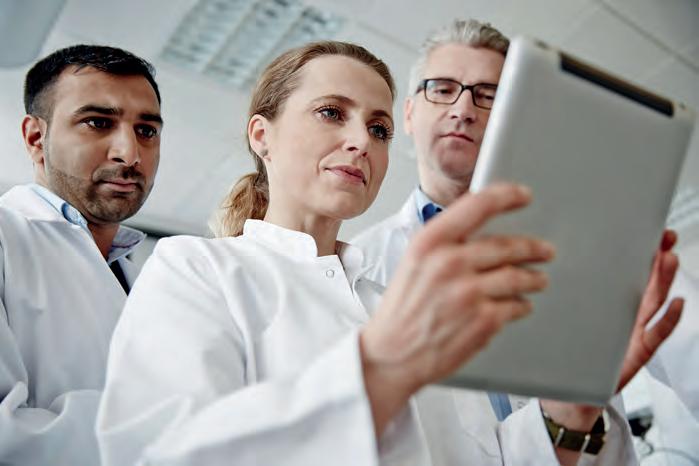
In 2000, the Health Professionals Council (HPC) was created, initially shadowing the CPSM and eventually replacing it in 2003.
In 2012, the HPC took over regulation of the social workers in England, and in line with this, rebranded itself as the HCPC to reflect this. As an organisation, the HCPC has set out its core aims and values, see 2
As a regulator, the HCPC must assess registrant “quality”, e.g. knowledge, experience and competence, against a set of standards. To meet these standards registrants are required to provide evidence of reaching several “bars”: Conduct, performance and ethics: Some standards apply to our behaviour and character. Standards set out the expected level of professionalism for our roles. They cover topics such as communication and confidentiality, managing risk, and honesty. Proficiency: This relates to safe working practices and working within your scope of practice/competence.
CPD: This is a cornerstone of remaining on the register. These concern evidencing records of doing regular, relevant CPD activities and CPD audit. In 2022-23, the HCPC will expect to undertake ~3350 CPD audits.
Education and training: To become registered, candidates must provide evidence of appropriate education and training. These standards set out the necessary levels both for candidates, and education and training programmes. The HCPC maintains a list of approved educational and training courses.
As mentioned above, a regulator’s key aim is to protect the public. The HCPC does this, by performing a small range of linked activities: Setting standards: As seen above, the HCPC produces and maintains a set of standards covering all aspects of the registrants role. These are used to enable candidates to be registered, and to remain on the register. This also involves answering >100 (annually) ethics and policy queries regarding their standards. Approve programmes: Some standards require candidates to evidence appropriate levels of education and training.
Like IPEM, the HCPC assesses UK programmes and approves/accredits those providing the required standards of education and training relevant to the needs of registrants. The HCPC makes around 160 annual visits and programme approvals. Keeping a register: As it says on the tin, the HCPC performs processes to enable
professionals to be registered and maintains this register of clinical scientists. In 2022–23, the HCPC expects to review 19,000 applications for registration. Take action: As part of maintaining the register, the HCPC must regularly check on the registrant records via CPD audit. It must also investigate complains and concerns raised about registrants. The fitness to practice (FTP) section receives and investigates concerns raised about registrants. In 2022–23, it expects to receive around 1400 concerns, and to conduct around 480 hearings.
Of course, outside of these key functions, like any large government body, it must also engage in a range of organisational activities: Organisational development, planning and strategy: The HCPC has internal structure, including a council and committees. These forums allow the HCPC to plan and develop policy and strategy.
HCPC’s corporate work also involves a number of strands which may be less visible:
I HOPE AFTER READING THIS YOU HAVE A BETTER UNDERSTANDING OF THE FUNCTIONING OF THE HCPC
Promoting high-quality professional practice: This is work to enable professionals to meet HCPC standardsand to adapt to changes in the working landscape. It involves engagement and collaboration with service users and the running of events and workshops. This is a key element in HCPC’s stated purpose:
“To promote excellence in the professions we regulate and champion high-quality care that the public can access safely and with confidence”.
Using data and research to inform evidencebased decision-making and policy: The HCPC routinely gathers data, research and opinion to help inform decisions and policy. This information potentially enables the HCPC to advise and exert influence. Outreach: The HCPC aims to promote the value of regulation, and to be engaged and visible to the public and registrants. Engagement with service users and the public: To bring changes into practice often involves obtaining opinion from service users and the public. For example, to potentially raise registration fees, the HCPC will generally send out an invitation for consultation. The HCPC has a Professional Liaison Service, which organises events throughout the year with professionals. Partnership work: The HCPC invites service users to engage with them in certain kinds of work, for example, registrants are often invited to be partners, to assess educational and training programmes, or to sit on panels to review registrant competency.
All this and more is covered in the HCPC’s corporate plan for 2022-23, which is available to downloads from its website, as is the corporate strategy for 2021-26.
As with most large organisations, there is some standard structuring and some defined roles within the HCPC. At the top, is CEO (currently John Barwick), some directors, e.g. Director of Finance and a Registrar and Deputy Registrar. There is a set of individual department heads, and often departmental committees, all of which can be seen on the website.
The HCPC is governed by a council, which is made up of the chair plus 12 members
(six professional registrant members, and six lay members). Appointments are made by the privy council.
The HCPC functions within a Code of Corporate Governance – a set of rules which relate to the law that initiated it.
One of the most common queries with the HCPC relates to registration fees, and how it spends its budget.
Figure 3 shows a simple breakdown of HCPC expenditure in 2020-21, by department (this is taken from that year’s annual report).
Much of the expenditure is as might be expected in a large organisation – office services, IT services etc. One obvious aspect, is that the largest element of expenditure – almost half the spending – goes on the work of the FTP team. Processing ~500 hearings per year, as mentioned above, involves significant input from solicitors and barristers and associated court fees. This is perhaps not unexpected and is largely unavoidable.
The HCPC was established as a governmental statutory body in 2002. This order allows for rules to be made, which underpin how the HCPC functions. Some of these rules are made solely by HCPC’s council (e.g. those relating to the education and training committee), and some by council and approved by the privy council.
The structure of governance is shown in 4. Our profession is regulated by the HCPC, which is regulated by the Professional Standards Authority (PSA). Performance and issues are ultimately reported to parliament via the Secretary of State for Health who is the Chair of the Select Committee for Health.
The PSA regulates the HCPC, and compiles complaints. It does not investigate individual complaints, however, they do collect and summarise performance in an annual report. Their report goes to the Health Secretary and is publicly available.
Given the governance structure, it can be argued that how the HCPC functions and its performance quality, is – at least in part – a political matter, which one could argue makes issues of performance and accountability rather muddy.
My aim is to have provided some background about regulation before presenting the results of a survey about our experiences of regulation by the HCPC in a forthcoming article in Scope. I hope after reading this you have a better understanding of the functioning of the HCPC, how it spends its budget, and who assesses it is performing as it should. In the next article, we dig a little deeper and unpack some of our own experiences, as a profession of the HCPC’s performance. I
you’ll join me there.
More often than not, a patient’s first point of call for an imaging or therapeutic appointment in a nuclear medicine (NM) department will be a clinical technologist. For a typical procedure, technologists act as an “operator” under legal regulations meaning that they are the ones tasked to safely expose radiation to the patient. Additionally, a more experienced technologist may work as a “practitioner” under the same framework to check that a referrer’s reason is justified to carry out an exposure. Their duties are extensive, but in summary they:

● Perform quality control tests on complex imaging and measuring systems
● Dispense different radiopharmaceuticals to correct activity levels for patients
● Check that the correct patient is here for the right test and take a medical history related to the NM procedure
● Administer radiopharmaceuticals intravenously, or by means such as a capsule or eye drops
● Operate the imaging equipment using a precise protocol
● Monitor waste and the local environment for contamination.
To top the list above, a technologist’s most valuable asset is their communication and
dexterity. A skill in speaking is highly regarded because they must explain the test and highlight how the benefits outweigh the risks of ionising radiation. Each discussion must be tailored to the individual needs of the patient so that they understand and consent to the procedure. At the same time, their handling skills are valued because they need to manipulate shielded syringes to dispense radiopharmaceuticals and operate large, complex imaging equipment. These are skills which make technologists the envy of our clinical scientist and radiologist colleagues. Now, it is impossible to fathom how technologists in NM are overlooked in clinical settings involving a multidisciplinary team of radiographers, nurses, clinical scientists and radiologists. NM departments would cease to function without them. However, there could be some discrepancies once a step is taken away from the clinical setting. When observing areas of education and career progression, there are points to highlight on how a career as a technologist could be slightly more unfavourable. This can be highlighted quite significantly when the role is compared to our radiographer and clinical scientist colleagues, for instance.
Starting with school leavers considering applications to university. There are roughly 32 universities in the UK offering degrees in radiography. Alternatively, there are two universities offering specific NM courses to students interested in undergraduate study. With more universities offering the same course comes greater publicity through digital advertisements trying to tempt students to their university. This means that a student would tend to go for radiography.
However, it is not all doom and gloom as many school leavers do not go directly to university. Another way is joining the NHS through apprenticeship schemes. Applications for those jobs tend to direct the trainee to those specific NM healthcare science courses. There is the potential for fees and expenses being paid.
Whilst an NHS apprenticeship for NM is a welcome addition to recruit new school leaving talent to the technologist profession, what are the options for university graduates? For radiography graduates, joining an NM department and enrolling on a Masters course is a simple way. There are a greater number of postgraduate courses, compared with undergraduate. This differs for science graduates. It is notable that science graduates tend to have careers advice that does not point to the technologist profession. Commonly, science students are told to consider the Scientist Training Programme without the consideration of an alternative route. Additionally, the disappointing discontinuation of the “fast-track” two-year Practitioner Training Programme is a huge loss for departments to recruit graduate talent with strong scientific backgrounds. Nevertheless, all is not lost. There is the IPEM’s Technologist Training Scheme, which may have been little used in the past but is currently expanding and taking in greater numbers than ever before.
Registration is a must for technologists who are qualified, and is where the Register of Clinical Technologists (RCT) comes into play. Applicants to the RCT must submit a portfolio of evidence and demonstrate the right academic qualifications necessary. Once
Clinical technologists play a huge part in the daily running of nuclear medicine departments, but does their role go unnoticed? Robert Konstandelos puts forward his opinions.
registered, a technologist must continue to demonstrate a high standard of competence and continue to professionally develop their skills. Otherwise, one could be struck off. Unfortunately, the RCT is only a Professional Standards Authority register. This still means qualified, unregistered technologists can work in the NM profession. Although there are many wonderful, unregistered technologists working in the NM field today, there can be concerns, such as those of sonographers, that patients could be put at risk. Furthermore, questions have arisen whether technologists can administer medicines as per protocol for a NM study. RCT registration should allow technologists to continue with those tasks, but is there a more robust system to monitor technologists?
Comparatively, our radiographer and clinical scientist colleagues are registered with the Health and Care Professions Council (HCPC). The HCPC is the government’s centralised register and protects the designated titles of different health professions. However, there are stark differences between being registered with the RCT and the HCPC. All radiographers and clinical scientists must be registered with the HCPC to practice under their title. Also, all staff must comply with continuing professional development (CPD) to maintain their registered status. The result is that it allows for those registered to specialise in areas requiring more advance practice. Examples include image reporting in areas such as X-ray and computed tomography or performing more specialised procedures normally done by radiologists.
HCPC registration allows for professionals to branch out into new and exciting areas of practice. This is contrary to the progression and development of technologists. Upon completion of a training course, a typical

technologist trajectory is to become more senior with experience. Eventually, the most successful become leads or modality lead technologists. Although this more managerial pathway may suit some, it does not suit all. Desirably, there should be an option for technologists to become advance practitioners to improve capacity, resilience, and turnover in NM. However, without the admittance of clinical technologists to the HCPC, one can only dream of becoming an advance or consultant practitioner, like our radiographer and clinical scientist colleagues. This can only be a detriment that leads to high-flying technologists becoming clinical scientists at the expense to the patient-facing technologist team. This is something that needs to be addressed.
Raising the profile
Upon these negative aspects, technologists need to speak out to address the issues. In the instance of raising the profile of clinical technologists, one could return to their old university to promote their career path. There was an astounding surprise at the enthusiasm for the career upon visiting a careers fair at the University of York – some physics students may prefer a more hands-on work style involving patients that technologists perform. This was a fantastic way to channel enthusiasm and help inspire the next generation. Conversely, there are more conventional ways, like writing to your MP to complain about the differences in registration of technologists. The quiet minority of clinical technologists must speak up.
To answer to whether or not clinical technologists are an overlooked profession is debatable. They are certainly not overlooked in the clinical setting with respect to our colleagues. However, viewed through a corporate or academic lens there are certain grounds to suspect they might well be. NM healthcare science courses are a tiny minority when compared to the large number of
radiographer courses advertised. A school leaver will tend to opt for radiography because of the larger number of radiography degrees available and their exposure to many different modalities, including NM.
Additionally, a clinical scientist is highlighted as the most likely career option for science graduates at university. Finally, for clinical technologists to be a continually excluded profession from the HCPC is a failure of governing bodies that must protect patients. This is because unregistered technologists, even if their practice is outstanding, are allowed to work unchallenged. Technologists must speak out regarding these discrepancies to influence change through our societies, such as IPEM.
Nevertheless, there are shoots of optimism when we look to the future. To hear that 23 trainees successfully completed IPEM’s Clinical Technologist Training Scheme as part of the November 2022 cohort, of which there are two per year, is a victory. This shows that there is enthusiasm for work in modalities such as NM. Hearing of opportunities for apprentices shows that departments are looking towards the future in training the next generation of staff. Hopefully, these training schemes and apprenticeships can expand to increase the clinical technologist workforce. Lastly, seeing the eagerness of undergraduates at a careers fair shows that technologist work is a highly rewarding pathway. One must harness this interest and point to the future.
Robert Konstandelos is a Senior Nuclear Medicine Technologist at the Institute of Nuclear Medicine T5, University College Hospital, London. Find out more about IPEM’s Clinical Technologist Training Scheme: ipem.ac.uk/learn/ipemclinical-technologist-training-scheme

Many medical physics departments report difficulties in recruiting staff, with workforce surveys reporting vacancy rates for clinical technologies of between 7% and 9%, depending on the band and area of work. is is a career that requires a combination of academic study and experience: to be on the Register of Clinical Technologists the applicant must either have a degree, be working at degree level, or have a Level 4 qualification and relevant experience.
One approach to recruiting new members of staff, available to employers in England, is to employ a degree apprentice. This allows a department to offer someone the chance to gain a degree, while also having that person working in their department as a trainee clinical technologist most of the time. The fees for the degree are paid out of the apprenticeship levy and so, while the department has to pay the apprentice’s salary and support them through their training, there are no additional training costs. Currently, NHS England is offering one-off grants that can be used to support training of the apprentice in a number of different ways. The academic component of the training is carried out at university (much of this is online, limiting the requirement for the apprentice to travel), while practical experience is gained by completing a range of work-based competencies. The degree apprenticeship fulfils the requirements of the practitioner
training programme (PTP) enabling graduates to join the Register of Clinical Technologists. The University of the West of England (UWE Bristol) offers degree apprenticeships in medical physics technology and this article reflects on the experiences of apprentices, graduates and employers. Degree apprenticeships in clinical and radiation engineering are also offered and follow a similar model.
While some of the apprentices are straight out of school or college, many are mature students, with over a third being 25 or older. In a recent survey of apprentices at UWE Bristol, half had worked in the NHS before starting, although not necessarily in medical physics. When asked what made them choose to do an apprenticeship, the chance to gain a degree while earning and without incurring debt was often mentioned, but so was obtaining on-the-job experience and the opportunity for career progression. As one apprentice stated: “The degree apprenticeship works for many people in situations that would otherwise be unable to access education. The university is very supportive of students, working and studying can be challenging but this opportunity to finish the apprenticeship and be fully qualified with real experience in the job is a great way to provide future security and career progression.”
One apprentice particularly valued “the opportunity to learn and earn a degree while gaining real work experience and building a network of expert mentors”. They went on to add: “I am a single parent and need to work as well as study. The apprenticeship allowed me to do this.” Another simply stated: “I can work towards my degree alongside work, meaning I don’t have to put my life on hold as I work towards my degree.”
The degree at UWE Bristol offers specialisms in nuclear medicine, radiotherapy and radiation physics. The areas in which the apprentices work reflect this. When asked what tasks they perform, answers included working in radiotherapy treatment planning, helping scan nuclear medicine patients, and carrying out X-ray quality assurance. The responsibility they are given and the complexity of the tasks they carry out increases as they progress through the degree, in line with their knowledge and experience.

The fact that the apprentices spend most of their time in the employing department means that they develop a range of
specialist skills, depending on their department’s needs and expertise. The opportunity to learn both theory and practice is valued, and we get feedback such as “this was a great option for getting the benefits of both university and practical learning on the job. I enjoy study but also find myself really enjoying the interesting role I’m in now, so it’s the best of both.”
Employers play a big role in ensuring that apprentices have a positive experience and achieve all the necessary competencies. The apprentice, their workplace assessor and a member of the UWE team meet regularly to ensure everything is going smoothly. As the apprentices generally have a substantive contract with their employing trust, most recent graduates have stayed in the department that they trained in once they graduate, with some progressing on to the Scientist Training Programme. The combination of academic and practical training produces graduates that in the words of one employer are “well trained and mature thinking members of staff” and
I DON’T HAVE TO PUT MY LIFE ON HOLD AS I WORK TOWARDS MY DEGREE
their apprentice “with UWE and our support, will be a credit to our profession”.
The apprentices attend university in person for three weeks each year, allowing staff and apprentices to get to know each other and carry out group tasks. For the rest of the year, the teaching is remote, making the course more accessible to those with family commitments. There are a wide range of software tools that allow a varied approach to online learning. In addition to traditional lectures, videos and interactive activities, such as quizzes, are used to promote learning. The experience that the apprentices gain in the workplace contributes considerably to the taught sessions, with the apprentices able to share their experience; this often leads to interesting discussions about how practice differs between trusts. In the final year, the apprentices carry out a research project in their workplace, with the topic being suggested by their employer.
When asked what they liked about being an apprentice, many stated that they appreciated being able to combine work and study, with comments such as: “I enjoy the apprenticeship and am very grateful for the opportunity. I enjoy study, so I very much like the university side, but also really like the role I’ve found myself in. It’s been a great opportunity to continue studying while gaining further benefits from actual experience in the job. I believe I will be in good stead for qualifying as a technologist, with the knowledge and experience in my role as well as some opportunities to network within my department and those on the course.”
When asked what they would change about the apprenticeship, issues with the portfolio of competencies are often cited. The apprentices need to complete around 100 of these (as specified by National School for Healthcare Science (NSHCS)). As the list was drawn up over six years ago, some, such as commissioning a CR system, are no longer relevant. This is a key focus of the programme review that is currently taking place. This review is being carried out in conjunction with our stakeholders and aims to update the competencies in line with revisions to the PTP made by the
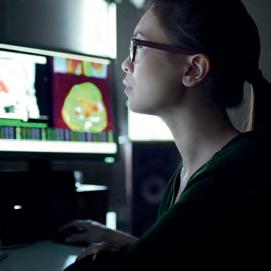
“This was a great option for getting the benefits of both university and practical learning on the job. I enjoy study but also find myself really enjoying the interesting role I’m in now, so it’s the best of both.”
NSHCS. Other areas being considered include how the time apprentices spend at university is structured and what topics need to be added or removed from the syllabus. We would be happy to receive any feedback or suggestions from existing and potential future employers.

Some apprentices also comment on the time commitment required to combine work and study, and our most successful apprentices do “work” more than a 37.5-hour week, especially when assignments are due or exams are approaching. There is an appreciation, however, that by doing this work they gain a degree combined with practical experience, all while being paid. As one student put it: “It is a very busy life, and I find that I do not have much free time, but I do feel I will be in a better position than those who are attending university through the standard route.”
The degree apprenticeship benefits both the employer and the apprentice. The employer can offer potential employees a valuable qualification, making what might be a hard-to-fill vacancy appear more attractive. The training costs of the apprentice are covered and the member of staff is in work most of the week, developing the skills needed by the department. For the apprentice, there is the opportunity to gain a degree and experience while earning and without incurring debt. The experience is best summed up by one of our graduates: “In 2019 as a mature student, I decided to take a daunting leap from a comfortable job in cancer rehabilitation to pursuing a job in medical physics. I was lucky enough to be offered a level 6 apprenticeship studying medical physics at UWE, Bristol. UWE were incredibly supportive, especially throughout the COVID pandemic, all while maintaining the highest standards of academia. The course was well planned with thought provoking and relevant content which you could see applied in your workplace the very next day.
“A blend of hands-on learning and in-depth lectures really helped me learn the practical aspect of medical physics, all whilst honing my critical and analytic skills moving forward.”


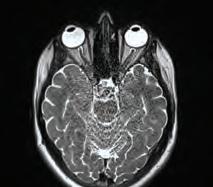



Sagar Sabharwal talks through his experiences with his Scientist Training Programme research project.
The journey from research and clinical implementation to publication can be a long and challenging process. I recently completed my MSc project for the Scientist Training Programme, the findings of which have been implemented clinically at the radiotherapy department at the Cancer Centre, University Hospitals Birmingham (UHB). I am currently in the process of writing a paper for publication – this is the first paper I’ve worked on. My experiences working on this project have taught me the importance of a well-designed research question and the critical role research plays in advancing healthcare and improving patient outcomes.
This project focused on determining optic nerve motion amplitude using magnetic resonance imaging (MRI) in order to calculate optic nerve planning organ at risk volume (PRV) margins for use in stereotactic radiosurgery treatment. I started on this project in summer 2021 and its findings were clinically implemented in summer 2022, a few months after the project was completed. This relatively short time from research to clinical implementation was possible due to the research planning, design and a multidisciplinary collaborative approach. For this work I won the IPEM Student Prize for best project in 2022 out of my cohort at the University of Liverpool. I also presented this project at the closing session of IPEM STEF 2023 in Glasgow.
The first step in any project is the initial need or realisation of the problem. In this case, the aim was to improve patient safety. The optic nerves move with eye motion, even when focused on a single point. The position of the optic nerves during radiotherapy treatment may be different from the original scan(s) used to create the radiotherapy treatment plan. During stereotactic radiosurgery (SRS), highenergy photon beams are delivered with high precision

over a small number of fractions. There are steep dose gradients in SRS (several Gy per mm) so the optic nerves could move into regions of high dose when treating lesions near the optic nerves. Exposing the optic nerves to high radiation doses can lead to radiation induced optic neuropathy, a late complication of radiotherapy, causing progressive irreversible vision loss. This risk could be reduced by adding a safety margin (PRV) around the nerve when undertaking treatment planning. The aim of this study was to use high-resolution MRI to quantify a typical range of optic nerve motion and therefore calculate optic nerve PRV margins for use in SRS treatment planning.
Once the purpose and aim of the project was realised, the next step was carrying out a thorough literature review, finding out what work had previously been done and considering how further improvements could be made. I initially used quite broad and generic radiotherapy terms in this literature search, which did result in quite a few relevant papers, but sifting through all this literature was time consuming. This, however, helped me learn which key words and phrases to use in my literature search and helped me narrow the scope of the search. Researchers such as K Qing et al. had carried out work similar to what we sought to investigate and this formed the basis for much of our project work. We made key changes to the methodology used by K Qing et al. Such changes included our eye position protocol for our volunteers and the use of the widely accepted van Herk model to calculate PRV margins specific to the CyberKnife system, the SRS system used at the Cancer Centre at UHB.
This literature review provided us with a solid foundation for our study design. At this stage, the project was split into five main objectives:
● Optimising the MRI sequence
● Developing an eye position protocol
● Imaging volunteers
● Measuring optic nerve motion from these images
● Calculating optic nerve PRV margins using the van Herk model.
Furthermore, as volunteers would be
imaged for this study, an internal UHB trust audit application was made and approved. Planning the study in detail and setting key objectives helped keep the project on track – this was partly planned/managed using a Gantt chart.
A volunteer was imaged with a 3T MRI scanner in order to optimise an imaging sequence. Some of the test images, along with an image from the final sequence used for this project are presented in 1 This stage of the project and the eye position protocol was completed with the assistance of an MRI physicist (Clinical
Scientist). Working in collaboration with someone outside of my specialism highlighted the importance of multidisciplinary teamwork. It allowed for the objectives of this study to be completed effectively and provided me with a much deeper insight into MRI physics.
The eye position protocol was based on work done by K Qing et al. in which they asked volunteers to freely look up, down, left, right and straight ahead for each MRI scan. However, for this project we wanted to image a non-strenuous range of eye motion we believed may be more applicable to how patients may behave during clinical radiotherapy treatment. We thought it was unlikely patients would look towards the extreme edges of their vision during treatment for any significant length of time – they’d be more likely to attempt to move their head.
We acquired six MRI scans of volunteers who were looking straight ahead, up, down, straight ahead again, left and right using the set up in 2. We believe that this set up provided a nonstrenuous range of eye motion as well as being easily reproducible.
 2 The MRI set up. Images with positional markers to focus on were shown to volunteers for each scan
2 The MRI set up. Images with positional markers to focus on were shown to volunteers for each scan
We imaged 10 healthy volunteers for this study and took repeat scans of three of our volunteers to assess reproducibility. These volunteers were recruited from the radiotherapy staff group at UHB and were 21-65 years old. However, it was unlikely this restricted age range would affect our results. Images of volunteers looking in different directions as shown in 3 were acquired.
All MRI images were rigidly registered to the first MRI scan of the volunteer looking straight ahead, and then motion markers were placed along the optic nerves for each scan in the positions shown in 3
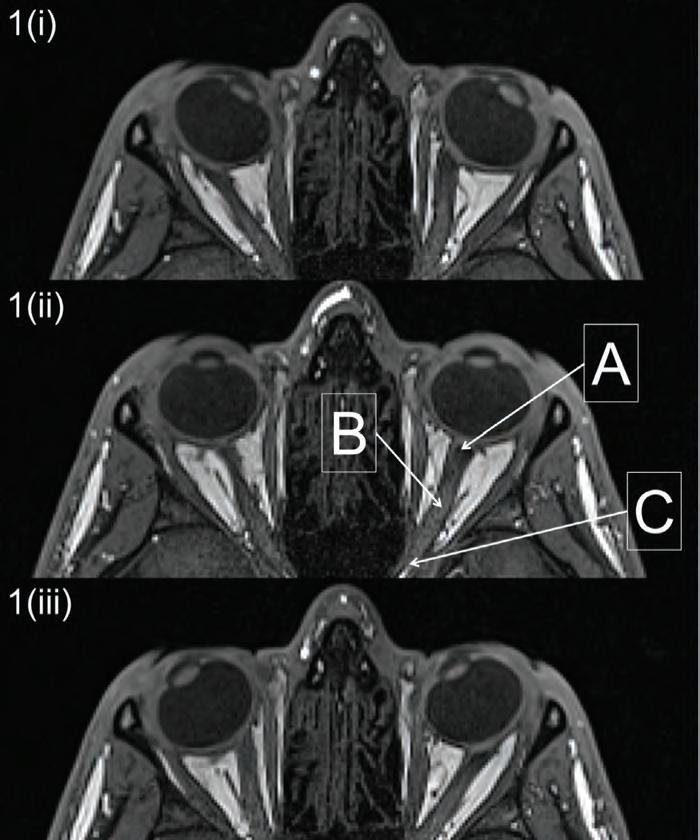
This stage of the project was completed with the assistance of a consultant neuroradiologist, giving me an insight into various clinical and anatomical considerations.
This included guidance on optic nerve contouring and the suitability of the MRI sequence used. Neuro-radiologists are involved with approving contours for all intracranial SRS patients treated at UHB (320
of approximately 400 patients per year).
This strong multidisciplinary approach is a key part of the SRS service at UHB.
The widely accepted van Herk model was used to calculate optic nerve PRV margins for use with CyberKnife planning. This model considers the systematic and random errors in radiotherapy treatment for radiotherapy margins calculations. This includes uncertainties such as organ motion, patient setup uncertainties and the technical accuracy of the treatment machine. The technical accuracy of the CyberKnife system at UHB is tested during routine QA. These errors along with the optic nerve motion data were used to calculate optic nerve planning risk volume margins.
Two PRV margins were calculated: an isotropic margin and a non-isotropic margin. The 1 mm isotropic margin was calculated when considering the scenario where patients were asked to look straight
ahead for the treatment; this also accounted for random motion when a patient’s gaze may momentarily deviate. The nonisotropic margin (3 mm left/right, 2 mm sup/inf, 1 mm ant/post) was calculated when considering the full range of optic nerve motion in a worst-case scenario. These margins were then applied to historic sphenoid wing meningioma CyberKnife plans at UHB in order to calculate the dose the optic nerves may have received when accounting for motion.
It has been shown this motion may result in a clinically significant increase in dose to the optic nerves. Therefore, optic nerve PRV margins may need to be considered in routine intracranial CyberKnife treatment planning to account for organ motion. Since the MSc dissertation for this project was submitted, the findings of this study have been used to guide the CyberKnife treatment of two patients with lesions in close proximity to the optic nerves. These patients were treated with fractionated SRS and the clinical results will be published in due course. This project ultimately shows the importance of carrying out a thorough literature review and creating a well thought out plan before starting. More importantly, I believe the biggest reason this project was successful was the collaboration between a multidisciplinary team of radiotherapy physicists, MRI physicists, oncologists and a neuroradiologist. This allowed for the expertise of each person in the team to be utilised at each step in the project. Having just completed the Scientist Training Programme, I will ensure that I keep this experience in mind when working on any project throughout my career.
Sagar Sabharwal is a Clinical Scientist working in Medical Physics at the University Hospitals Birmingham NHS Foundation Trust. He would like to thank Geoff Heyes, Rob Flintham, Sam Tudor, Swarupsinh Chavda and Paul Sanghera for their assistance with this project.
3 MRI images of a volunteer looking left (i), neutral (ii) and right (iii). Position A is the point where the optic nerves meet the eye, position C is the point where the optic nerves leave the optic canal and position B is the point located half way between position A and C. These positions were used to measure optic nerve motion.Usman Lula, Principal Clinical Scientist at University Hospitals Birmingham (UHB), describes a survey of workflows within UK radiotherapy planning and a comparison to local practice at UHB.
36weresurveyresponses representingreceived,a55% responserate
92% haveapaperless prescribingworkflow
72%have a referralpaperlessworkflow

47% have an planningautomated (and related) managementworkload or allocation method
Carefully designed surveys provide a plethora of information around the variations in clinical practice and can be used as a really useful snapshot in time. The data collected can be helpful to entities developing proposals, facilitating projects and providing evidence of current practice.

The purpose of this survey, conducted in early 2023, was to establish the types of workflows present within radiotherapy planning in the UK, including those immediately upstream and downstream. In trying to answer this, we asked a number of questions including:
our 23 consultant clinical oncologists at the University Hospitals Birmingham NHS Foundation Trust (UHB). The main “e-Workflow” project arm was designed to introduce paperless prescriptions, plan review and authorisation, while also streamlining and unifying workflows across different areas (RayStation, CyberKnife, TomoTherapy, Oncentra Brachy, RadCalc) in radiotherapy at UHB. Another arm of the project covers paperless “plan checksheets”, which is in the pilot stage at present and other items continue to get developed.
In this article, I provide a comparison of clinical practice between half of UK centres and the UHB.
A survey was designed using Microsoft Forms – an app that is freely accessible from within Microsoft Teams. Microsoft Forms was used primarily because Teams is already in use within our NHS trust and Forms has easy-to-use tools and clear design suggestions. It can be used for quick feedback to collect more detailed information with branching questions. Additionally, it provides really useful real-time visualisation of response data, advanced analysis and the ability to view the captured data in Microsoft Excel. The survey could be previewed on a computer and/or a mobile – showing how versatile and flexible the app is. It had been successfully used previously by the author for other projects.
● How many UK centres were paperlight (or paperless)?
● What system and method were used to undertake Ionising Radiation (Medical Exposure) Regulations consent, referral, prescribing, plan review and plan authorisation activities?
● What activities were performed remotely?
● How were centres managing planning workloads?
The information from the survey was used to gain approval for our “e-Workflow” project proposal by way of presenting to
The survey (Section 2) comprised of 14 questions and included a combination of multiple choice and free text answers. The free text answers were predominantly asking what method and/or system was used to facilitate the transition from paper to paperless (or paperlight). Survey questions were reviewed independently for feedback and worded to provide as much clarity as possible. No pilot was undertaken to understand how respondents would interpret the survey questions and thereafter to adjust and improve the wording of questions. An additional question on the consent process was requested via email – to those who had responded to the survey.
A shortened URL and a QR code were used to send and collect responses. A survey email provided the rationale for conducting the survey, the number of
questions, how long it would take to complete the survey, what devices could be used to complete the survey, the deadline date for the survey response, the survey URL and a survey QR Code. There was a statement in the email highlighting that information would be treated in confidence and any data published anonymously. The same information was also placed in Section 1 of the survey.
The email and survey link was sent to around 65 UK centres via a “Heads of RT Physics” email distribution list on 9 Jan 2023 which covered most (if not all) UK centres, including private and NHS organisations. A reminder email was sent a few days prior to the submission deadline with submissions being returned within a three-week window.
A total of 36 responses were received, representing a 55% response rate. The majority of respondents were heads of radiotherapy physics departments. Respondents were from locations in England, Wales, Scotland and Northern Ireland and represented large, medium and small radiotherapy NHS centres.
Almost all respondents stated patient consent took place using a paper form although thereafter, the form was in many cases, stored digitally within the Oncology Management System (OMS) or the electronic patient record (EPR) software. For those with a largely paperless pathway, tablets and electronic signature pads were also in use.
At UHB, we have a paper consent form, which once completed is scanned and uploaded by our admin staff to our trust in-house software (“Clinical Portal”), which is part of the hospital EPR software. There is a trust-wide project (as is the case with many other trusts) that is trying to work on making the consent process paperless.
The majority of the centres (72%) did have a paperless referral workflow. To achieve the paperless referral workflow, a number of different pieces of software were in use by centres. This included predominantly ARIA (Varian), MOSAIQ (Elekta) and CASPER
(Cievert). There were small numbers of centres also using systems that support referral and/or appointment scheduling such as ICE (Sunquest), iQemo (iQ HealthTech), Epic (Epic Systems Corporation) and TrakCare (InterSystems). In MOSAIQ, the most popular method of supporting referrals was with the use of assessment forms, facilitated using QCLs (Quality Check Lists) and IQ Scripts. In ARIA, the most popular method of supporting referrals was using Encounters.
At UHB, we have been using paperless referrals with MOSAIQ Assessment forms since 2017. Although the majority of our referrals are electronic, there are a very small number in one external clinic that are still completed on paper due to governance – this is being addressed at present.
Almost all centre respondents (92%) have a paperless prescribing workflow. The methods used by centres included Varian ARIA (Prescription Workspace, CarePath and Encounter, Word Dynamic documents, annotations in comments areas) and Elekta MOSAIQ(RadRX, eScribes, Assessment forms). The survey did not include the types of contouring software in use by centres.
We started our trials for electronic prescribing in 2022 and have over the last couple of months transitioned to a paperless approach to prescriptions using Elekta MOSAIQ RadRX. Clinicians enter the prescription details in the RadRX area, sequence and approve generally after contouring. Automated (AI) contouring is undertaken by MVision software, with structures generally peer reviewed by site specialist radiographers, registrars or
independent consultants and thereafter, checked and approved by the clinician.
The survey did not include a question on how a case is booked into radiotherapy physics planning.
At UHB, we have a dedicated radiotherapy planning “Patient Pathway Coordinator” role who would book in a case as appropriate, help with compliance and facilitate planning related activities, upstream and downstream (e.g. fusion, contouring, planning, checking, clinician approvals)
Almost all centre respondents (94%) have a paperless plan approval workflow. A number of different methods were used by centres that included Varian ARIA (plan signatures; scripting to generate a form; task-based with PDF approvals; review and plan approval status; Word Dynamic Document; CarePath; Encounters), Elekta MOSAIQ (Evaluate; PDF approval) and the use of bespoke local databases.
At UHB, we moved over to electronic plan authorisation in the last couple of months using a PDF approval process. A PDF is merged at import into MOSAIQ and associated to the required prescription by physics staff and generally contains both the treatment plan report and a plan assessment form. The clinician performs plan review using a TPS and then if satisfied, they would electronically approve the prescription (RadRX) related PDF in MOSAIQ. If they are unsatisfied, they would reject the plan by skipping a QCL (task) and this would result in a new task “replan” with further instructions.
We are shortly intending to introduce a fourth MOSAIQ treatment interlock that relates to a plan doc PDF (‘Require Plan Approval for Treatment’ in Clinical RO configuration within MOSAIQ). A plan PDF interlock allows patient treatment to proceed only if the relevant plan PDF has been approved by a clinician.
Almost half of centre respondents (47%) have an automated planning (and related) workload management or allocation method. Centres predominantly used a
CAREFULLY DESIGNED SURVEYS CAN PROVIDE A MORE ROUNDED OVERVIEW OF CLINICAL PRACTICE
semi-automated method for workload management and were taking advantage of workflow features in existing software, for example, workflow tracking with MOSAIQ quality checklists (+IQ Scripts) together with limited (proactive) workload management and ARIA Care Path tasks, Task Pad and Encounters (Worklists). There were a few centres using in-house bespoke spreadsheets, databases and printed reports to manage the planning workload.
At UHB, the QCL checklists are used together with an Excel spreadsheet in Teams to manage the flow of cases through treatment planning, for self-allocation of plans and for statistics. We can see the benefit of using more functional planning workload management software, where we could allocate plans perhaps based on a number of factors including staff leave, competencies, availability and spreading reasonable workloads across available staff.
A Kanban style dashboard is being developed locally to provide an overview of the MOSAIQ QCL items (tasks outstanding) recorded for the pre-treatment pathway. This uses a partial offline copy of the MOSAIQ database that is updated periodically throughout the day. The dashboard provides an overview of the status of patients and where they are in the pathway relative to their treatment start date. It is hoped that this will help organise and prioritise work to avoid delays and help identify bottlenecks.
The majority of the centre respondents stated they had remote services for activities related to planning. Remote access was largely facilitated using a Citrix environment and virtual private network (VPN) access. Centres were taking advantage of workflowsupporting features available in the OMS (standalone or integrated), third party specialist software (e.g. MOSAIQ quality checklists; tasks and approval process in ARIA) or general trust software e.g. Microsoft Teams. There were some centres using a non-Citrix approach to remote working – that is remote desktop into a trust PC using VPN, for example.
Since the beginning of COVID, remote planning and home working by our UHB radiotherapy planning staff has been
I’d like to thank all the survey respondents’ for the really useful feedback. Also, the contributions of radiotherapy staff at UHB including the local ‘Paperlite’ Group, who approved the proposed consultation. Special thanks to Dr Sundus Yahya (Clinical Oncology Lead Clinician) for supporting and facilitating the e-Workflow project; Dr Geoff Heyes (Head of Treatment Planning & Deputy Head of Radiotherapy Physics) for supporting the project and reviewing the survey questions; Ms Rosemary Simmons (Head of Therapeutic Radiographers), Mr Steve Williams (QA Lead) and Ms Semrina Asghar (Radiographer MOSAIQ Lead) for helpful discussions; Dr Jason Cashmore for support and advice; Graham Chalmers (Head of Radiotherapy Physics) for sending out the survey and reminder; Mr Matt Brennan (Joint Lead Technologist) for surveying the West Midlands; Planning MPEs, Clinical Technologists and Technical Leads for useful discussions; Dr Ian Stronach (Clinical Computing Group Lead) for continued support with MOSAIQ, Mr Adam Chalkley (Deputy Head of Clinical Computing) for providing the information around the Kanban Boards; Prof Stuart Green (Director of Medical Physics) for reviewing this feature; and the very many discussions with therapeutic radiography staff, especially Ms Nicky Ball and colleagues.
undertaken using a Citrix environment where there is access to a number of clinical applications including but not limited to RayStation, RayDoctor, MOSAIQ, Prosoma (MedCom), Mobius3D (Varian), RadCalc (Lifeline software) and in-house developed software. We have dedicated “Senior Clinical Technologist Coordinators” who assist remote staff working from home communicating using a generic email account. The same account is used to exchange emails with clinicians. We will soon be introducing remote plan checking and remote clinician prescribing, plan review and approval. Clinicians requiring remote access would be able to review the RayStation plan using Citrix and rayDoctor or for Precision and Oncentra plans remotely using VPN with Citrix and Remote Desktop.
The treatment planning systems that were in use at the time of the survey included Varian Eclipse (19), RaySearch RayStation (11), Philip Pinnacle (9), Elekta Oncentra for Brachytherapy (3), BrainLAB Elements (2), Elekta Monaco (2), Accuray Precision (2) and Varian Ethos (1). Some centres had more than a single treatment planning software (TPS) in use clinically. The OMS that were in use at the time of the survey included Varian ARIA (22), Elekta MOSAIQ (13) and in one centre, both of these were used.

Across the West Midlands Operational Delivery Network, the majority of the pathways in treatment planning are paperlight or paperless. This covers referrals, prescribing, plan review and authorisation.
The survey results were successfully incorporated into our UHB “e-Workflow” project proposal with the intention to approve, plan and deliver the project. The project proposal was presented in January 2023, approved, planned and delivered within a three-month window. This article highlights the importance of carefully designed surveys and how they could be used to facilitate and expedite projects by helping develop the scope and methods, and generally provide a more rounded overview of widespread clinical practice.
Professor Carmel J Caruana outlines the ideas behind and the content within his book.

Traditionally, as a profession, medical physicists have given major importance to scientific leadership, and rightly so. However, we have up to now given scant importance to strategic and political leadership and the challenges we face in today’s world of austerity economics and commoditisation. Leadership and Challenges in Medical Physics: a strategic and robust approach is the first book to do so. My desire as author is that “the book will stimulate muchneeded discussion regarding current professional issues and help develop strong strategic leaders for our profession”.
There is much wisdom in this book and many who have been in leadership roles will recognise it as forming part of their own thinking and experience. Indeed, I acknowledge “all national, European and international medical physics colleagues who with their insightful discussions helped form my thinking over the years. I consider this text not solely my own – it is
also the cumulative total of the wisdom and experiences of many others”.



I am well known both in Europe and internationally and well placed to write about the topic. In my own country of Malta I guided the development of the profession from a time when it was totally unknown to a time when it achieved legal recognition. I was for many years Chair of the European Federation of Organizations for Medical Physics (EFOMP) Education and Training Committee, where I led the writing of the role development and education and training chapters of the European Guidelines on the Medical Physics Expert – a landmark document. I led or was involved in the writing of several policy documents of the European Federation of Organizations for Medical Physics (EFOMP). I represented the EFOMP on several EU projects and was involved in the early development of the International Medical Physics Certification Board (IMPCB). Very importantly, I set up, under the auspices of the European Network for Training and Education of Medical Physics
Leadership and challenges in medical physics: a strategic and robust approach is part of the IPEM–IOP Series in Physics and Engineering in Medicine and Biology and is available to purchase at ipem.ac.uk/resources/books

Experts and EFOMP, the first ever comprehensive module for leadership in medical physics (eutempe-net.eu/mpe01) – a module that has been described as a “Mini-MBA for Medical Physicists”.
Here are the contents of the book:
1. What is strategic and robust leadership, and why is it critical for medical physics in the present environment?
2. A strategic planning primer for medical physics leaders
3. Internal strengths of medical physics
4. Internal weaknesses of medical physics
5. External environmental opportunities for medical physics
6. External environmental threats for medical physics
7. Healthy leadership and leadership styles
8. Organisational psychology (also known as occupational psychology)
9. Organisational politics – learning to play the political game
10. Negotiating skills for the medical physics leader.

THIS TEXT IS THE CUMULATIVE TOTAL WISDOM OF MANY
Scope is YOUR magazine and we rely on your submissions! If you have an idea for a feature article or a review article then please get in touch. Articles from members on topical themes ensure that Scope is current and relevant, whilst review articles provide valuable background material to developments and innovations.
I am sure you agree that Scope is a high-quality publication for IPEM members to read. We seek to make it relevant and important reading material for people working in the field, as well as anyone with an interest in medical physics and clinical & bioengineering. To ensure that Scope is filled with interesting, informative and valuable material, we rely entirely on you to submit articles.

Scope is published four times a year and includes a varied number of feature articles. This is only possible if you continue to provide us with great material. The 2021 readership survey revealed that a number of people were willing to write articles. If you were one of the people who expressed interest in doing so (or even if you weren’t!), please give it serious consideration. Perhaps you have an idea that could be turned into a feature article but do not feel you are the right person to write it? Ask a friend! Alternatively, simply let us know about your idea and we will try to take it forward.
For more information please contact the Editor: Rob Dabrowski | 020 7324 2752 rob.dabrowski@redactive.co.uk
The submission process is simple and articles are normally published in the next issue. It will also count towards your CPD.
iopscience.org/pmea




